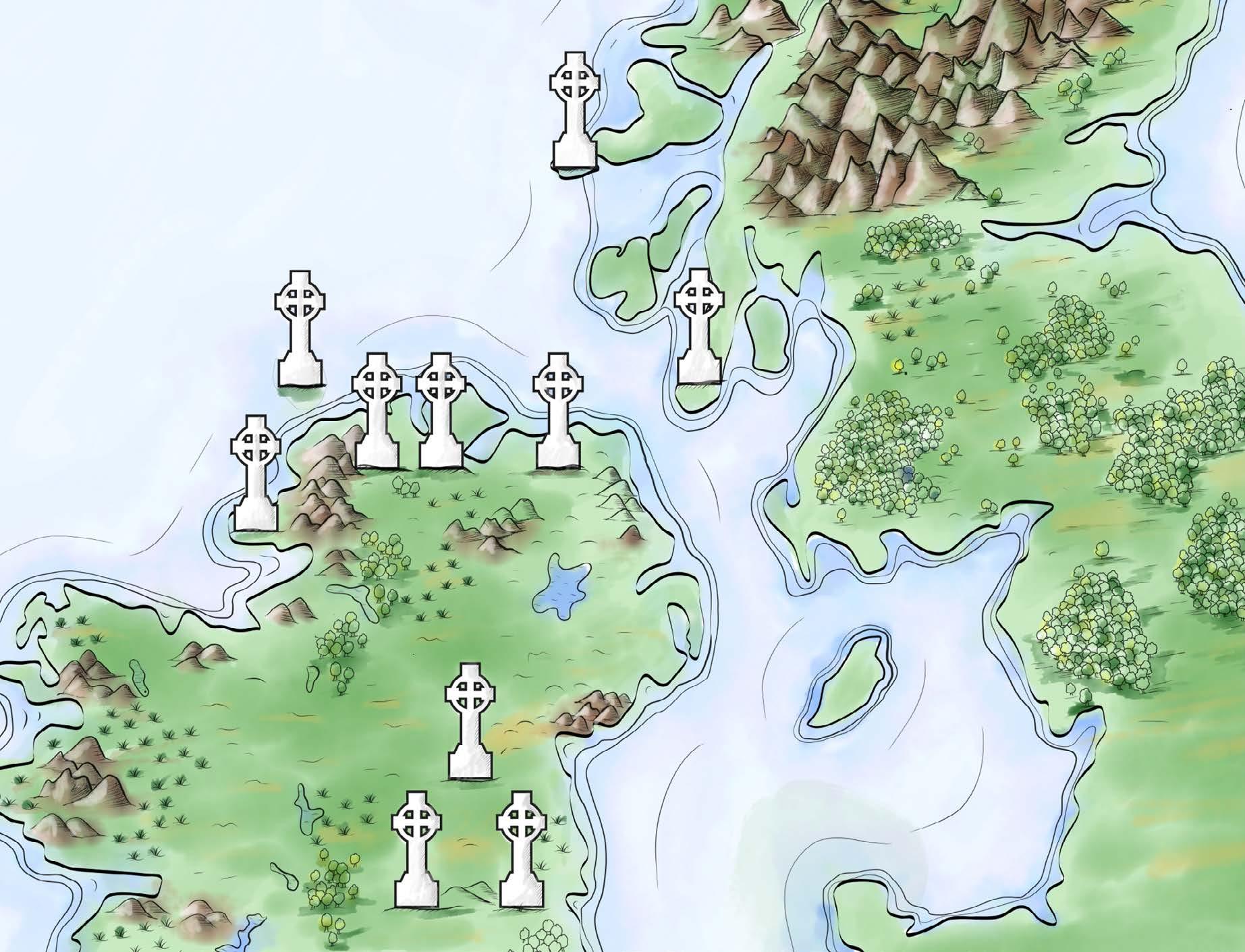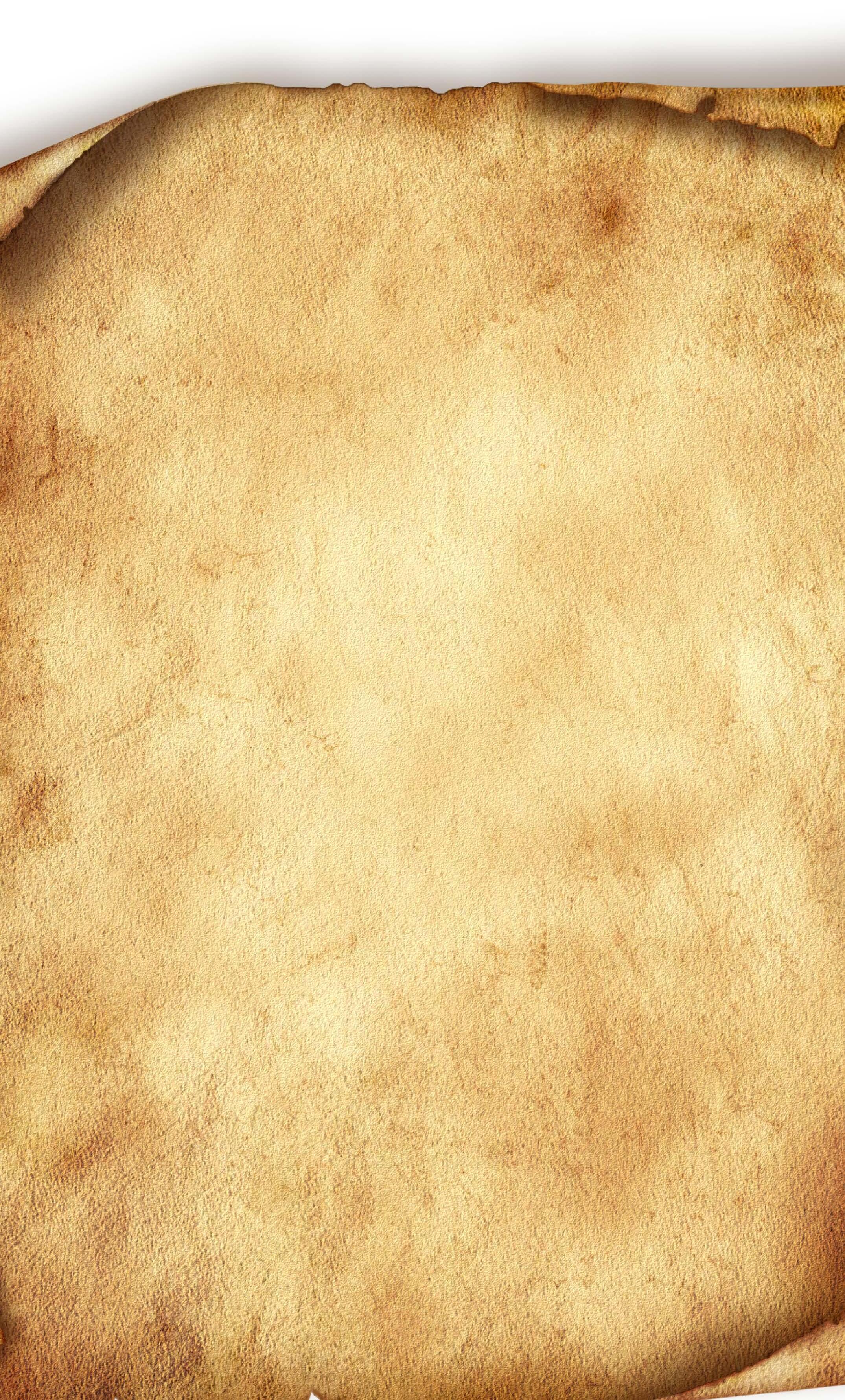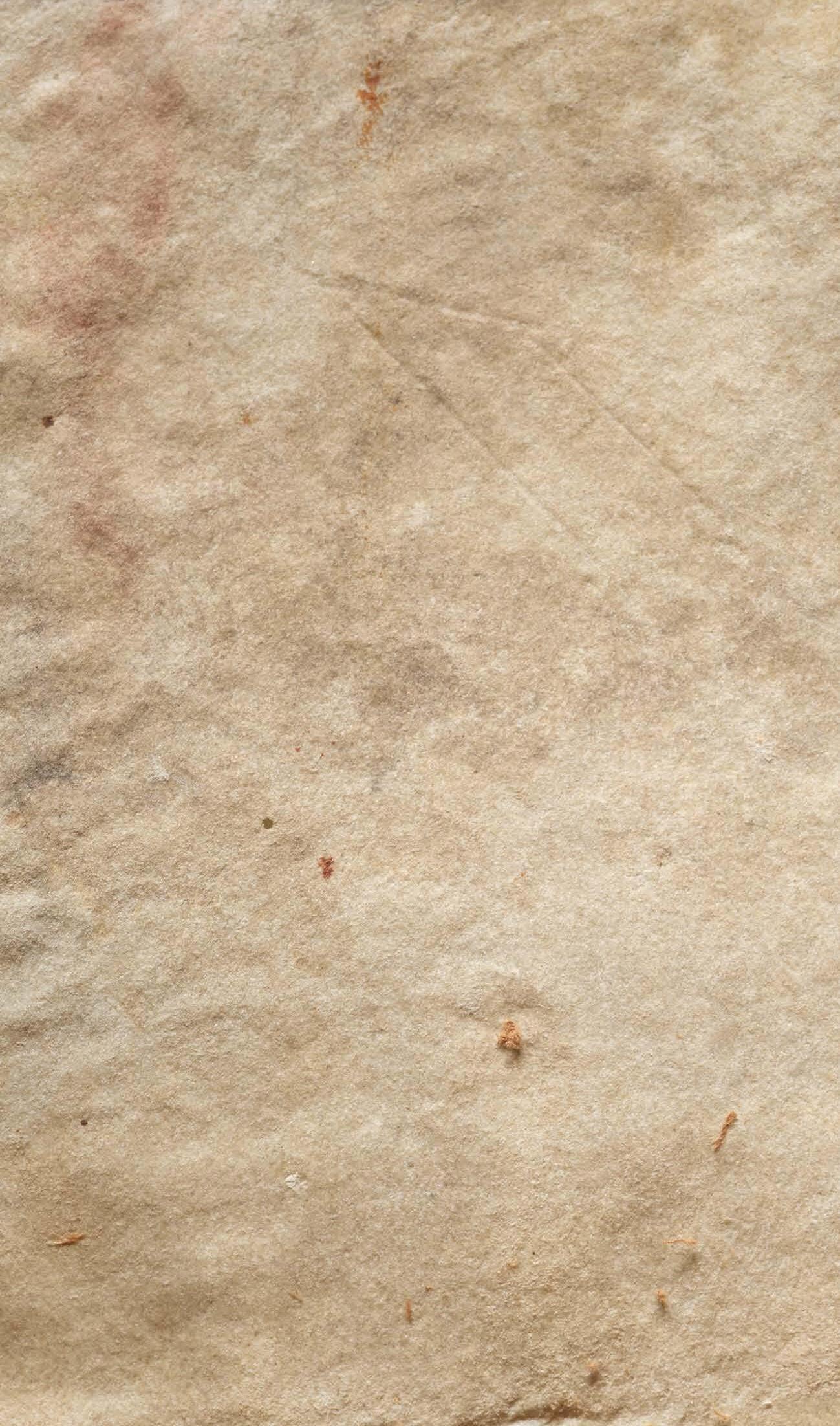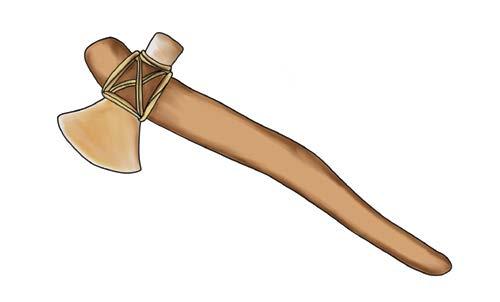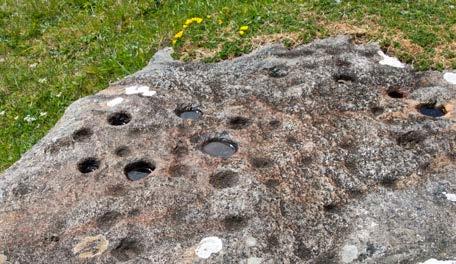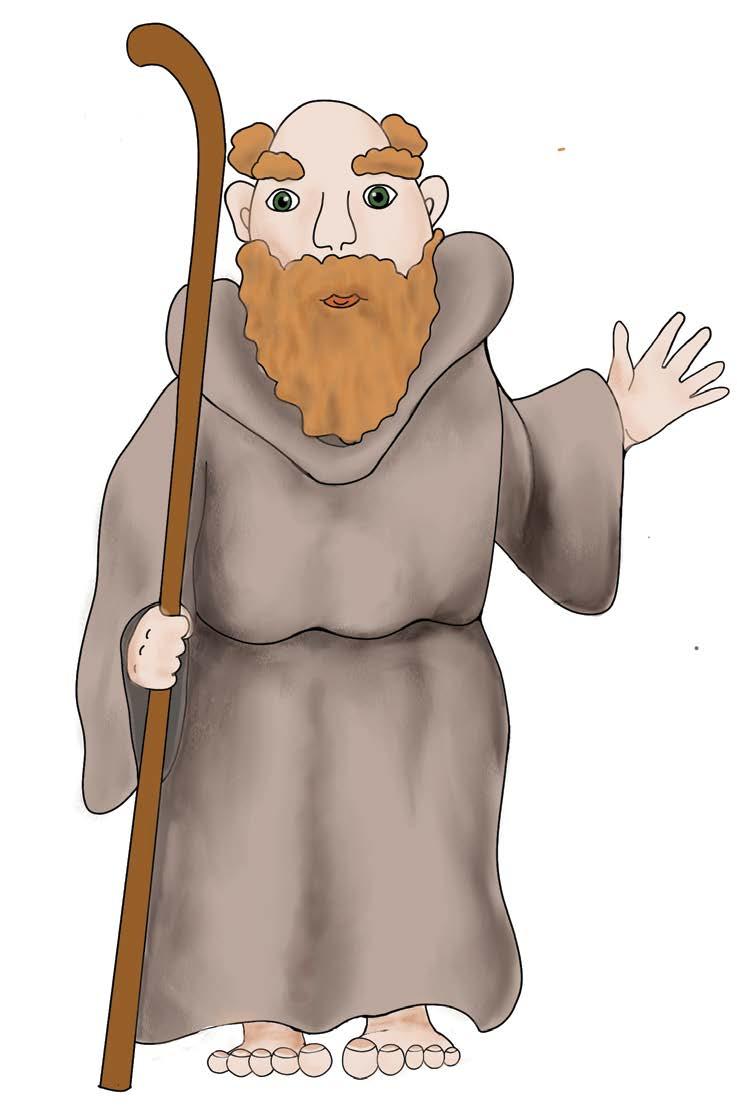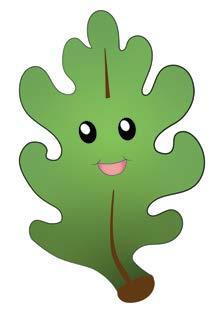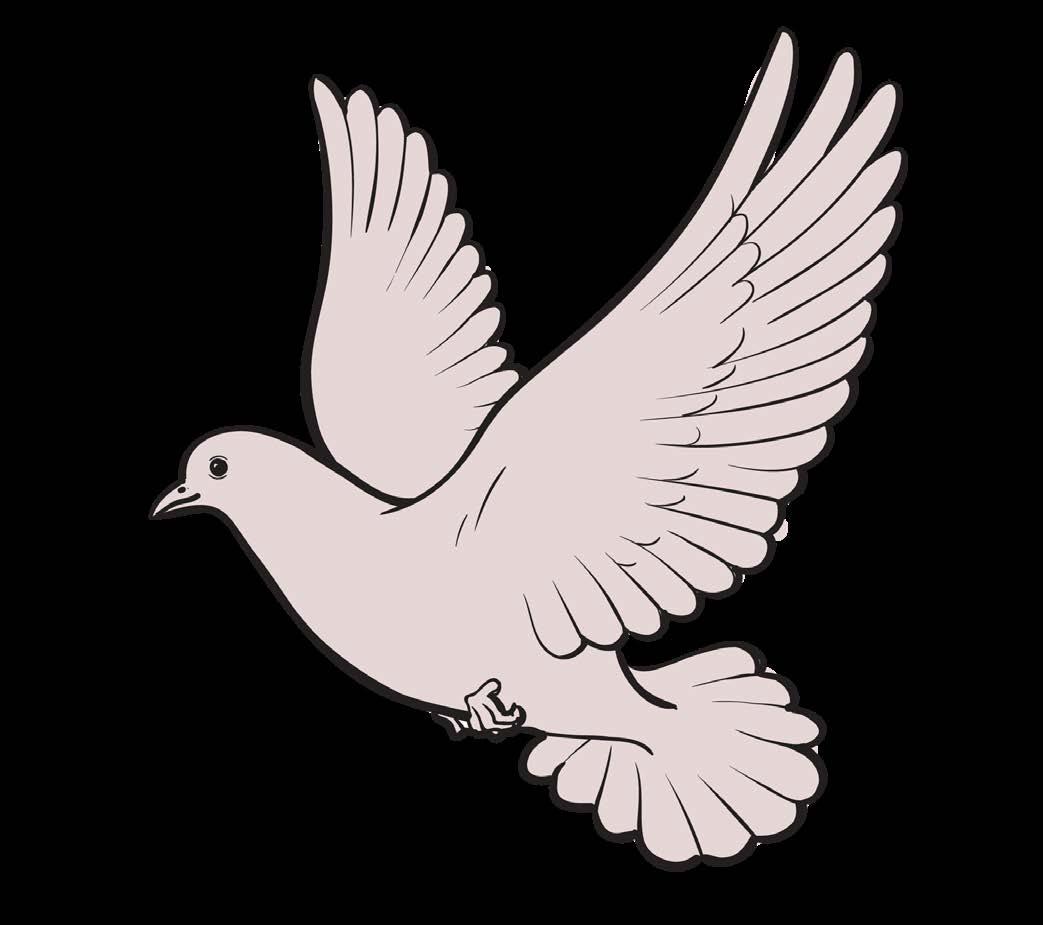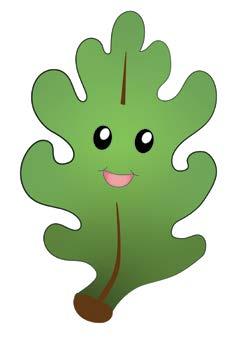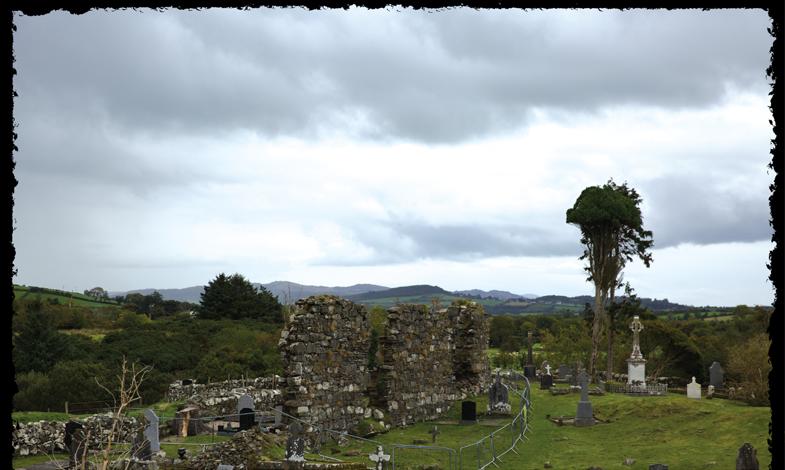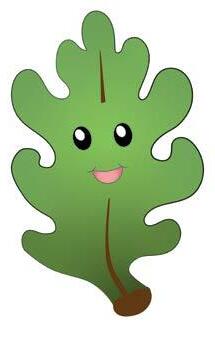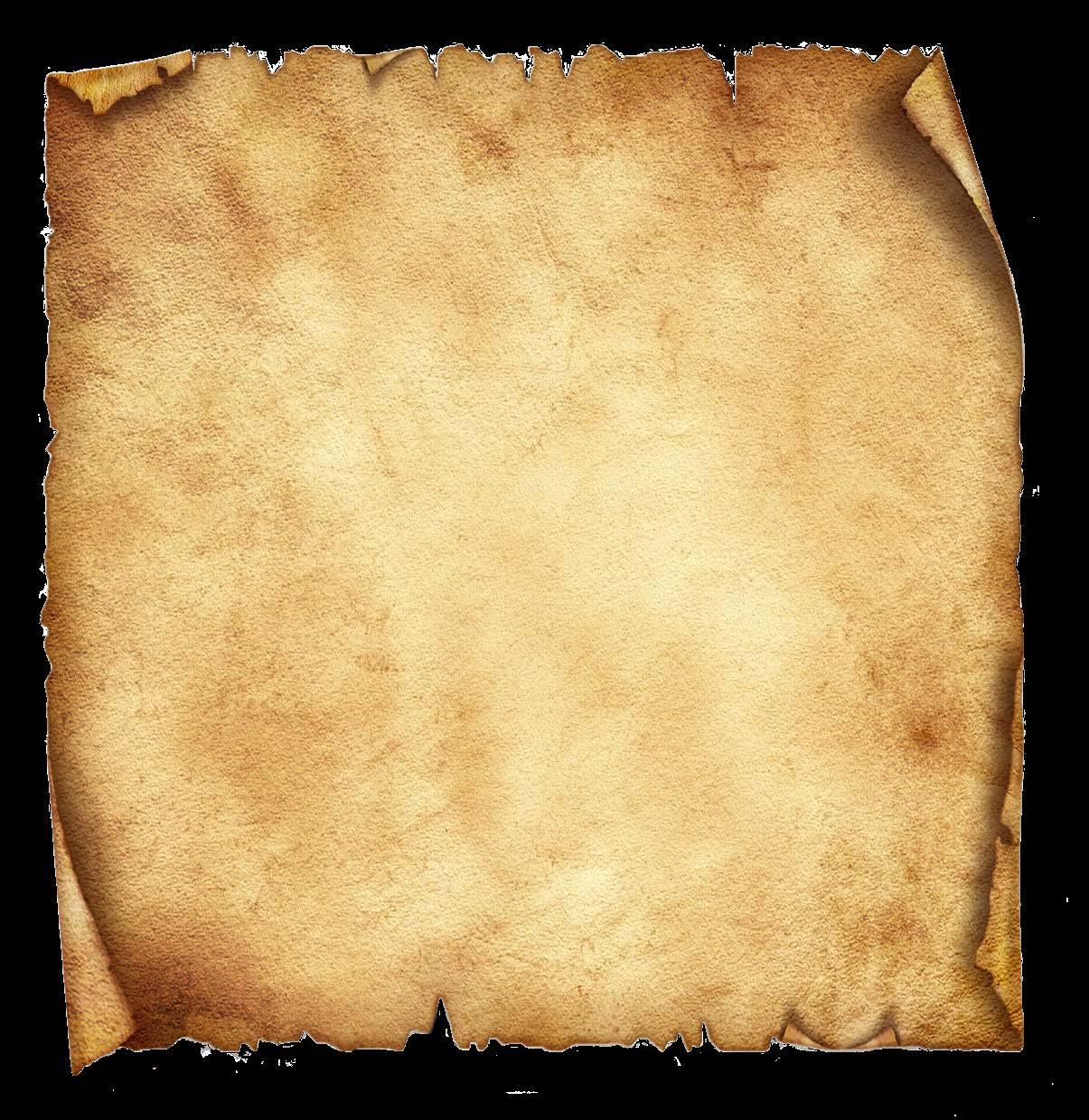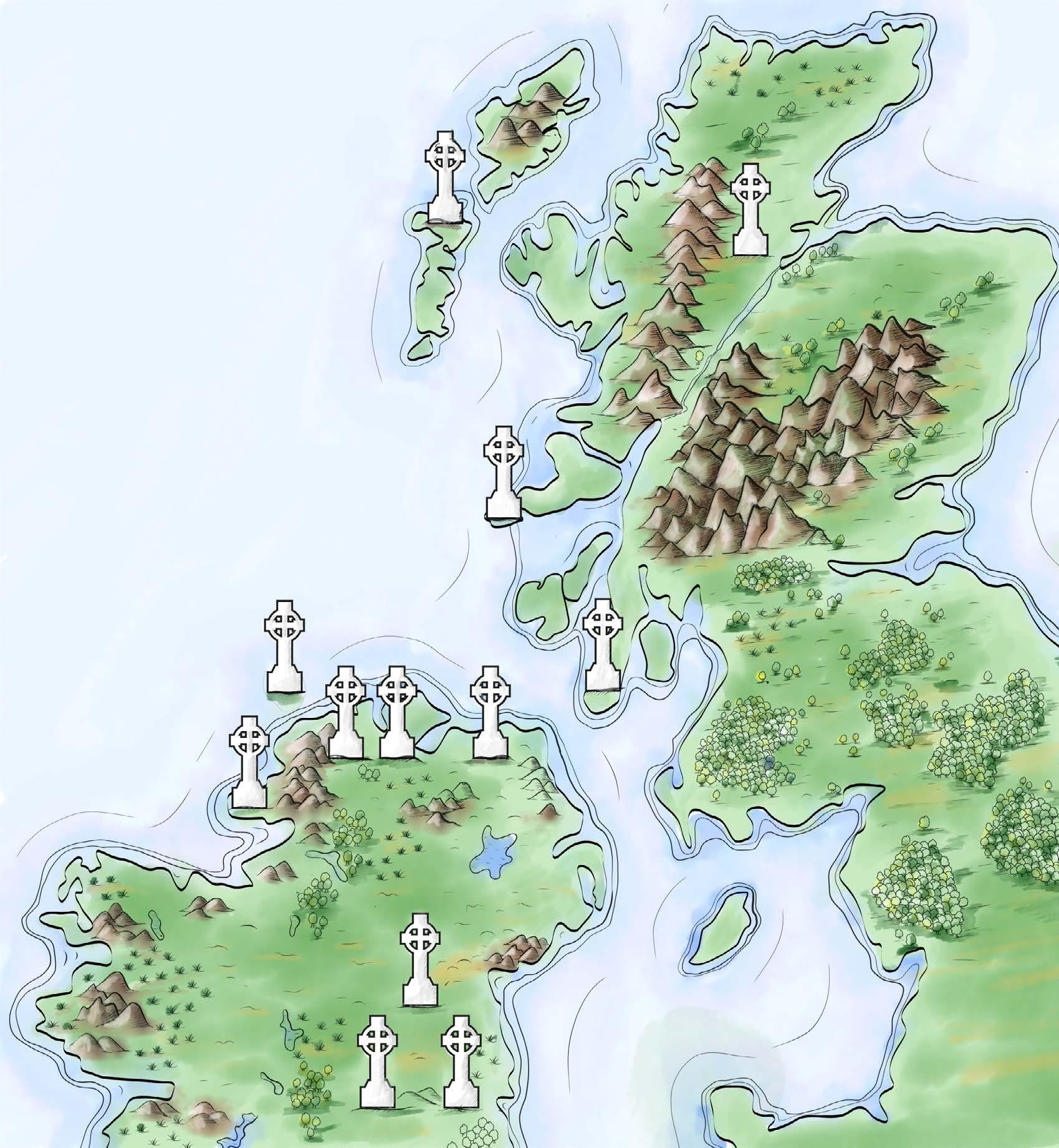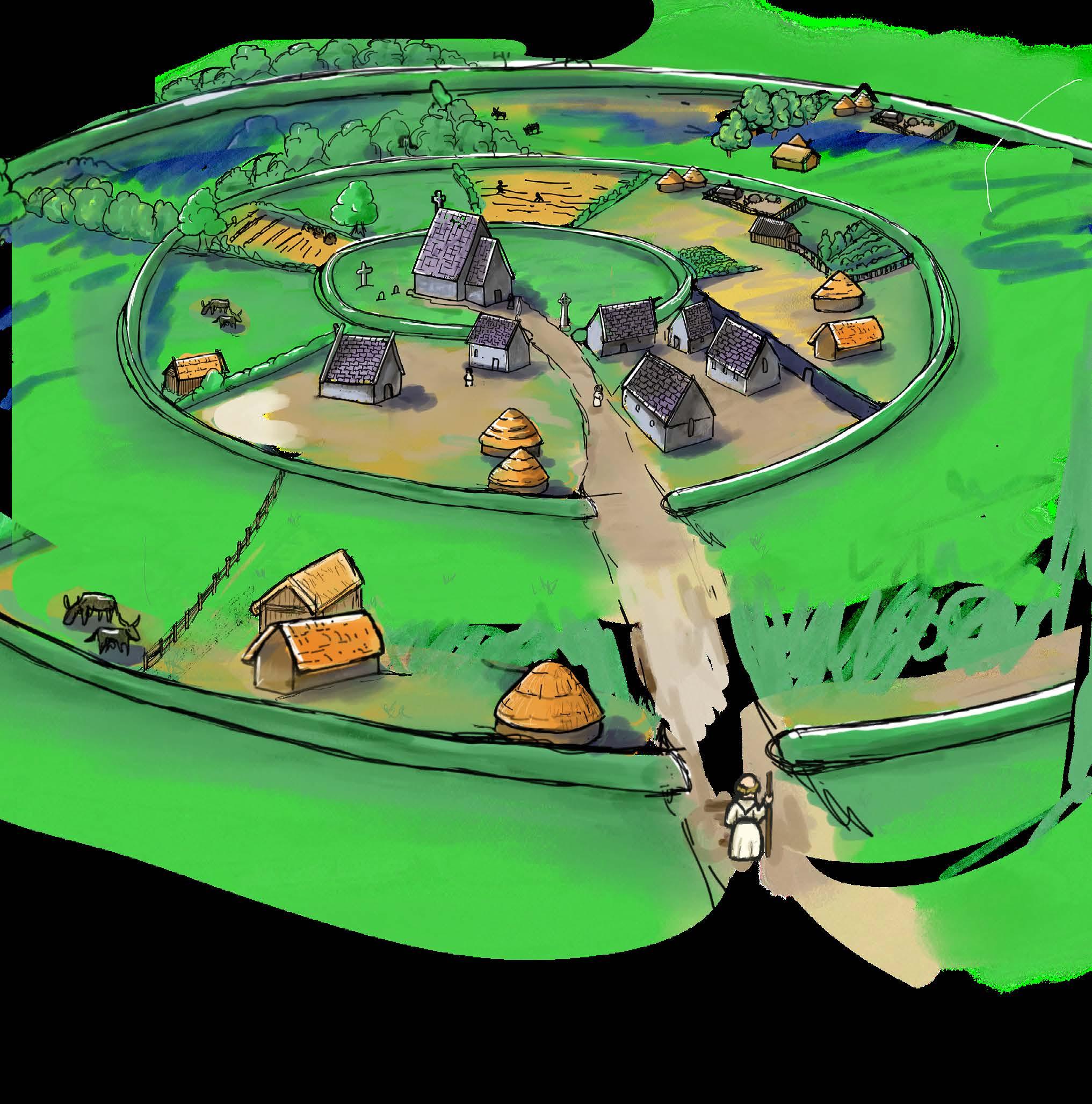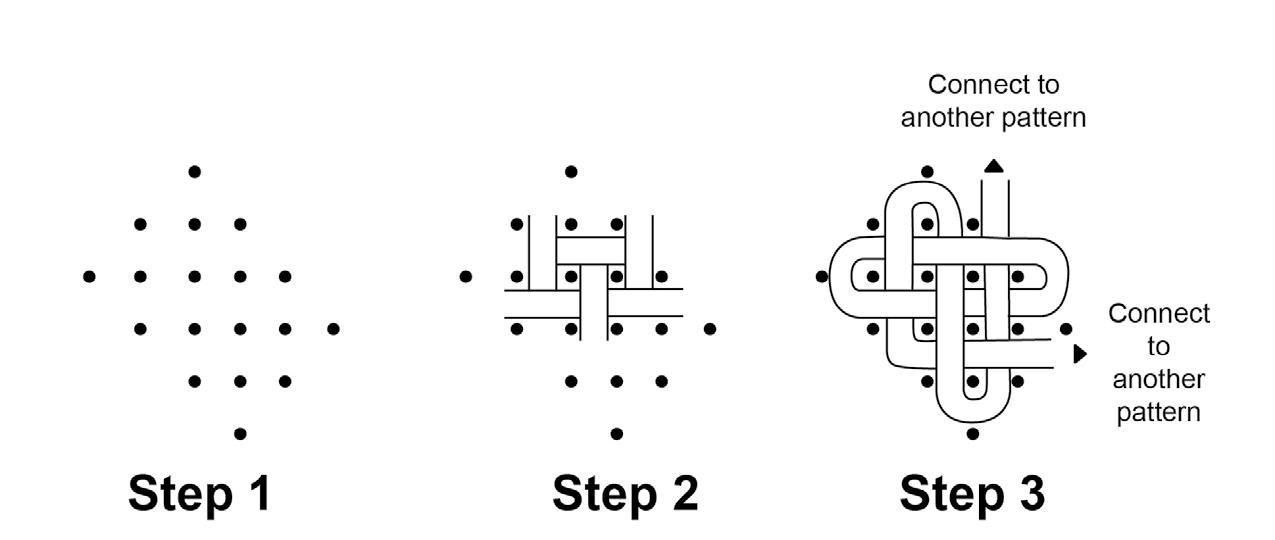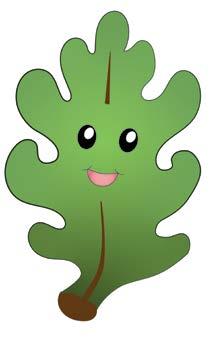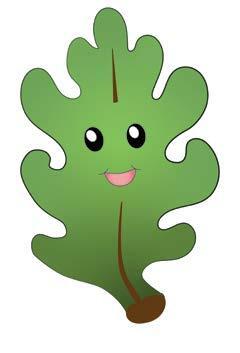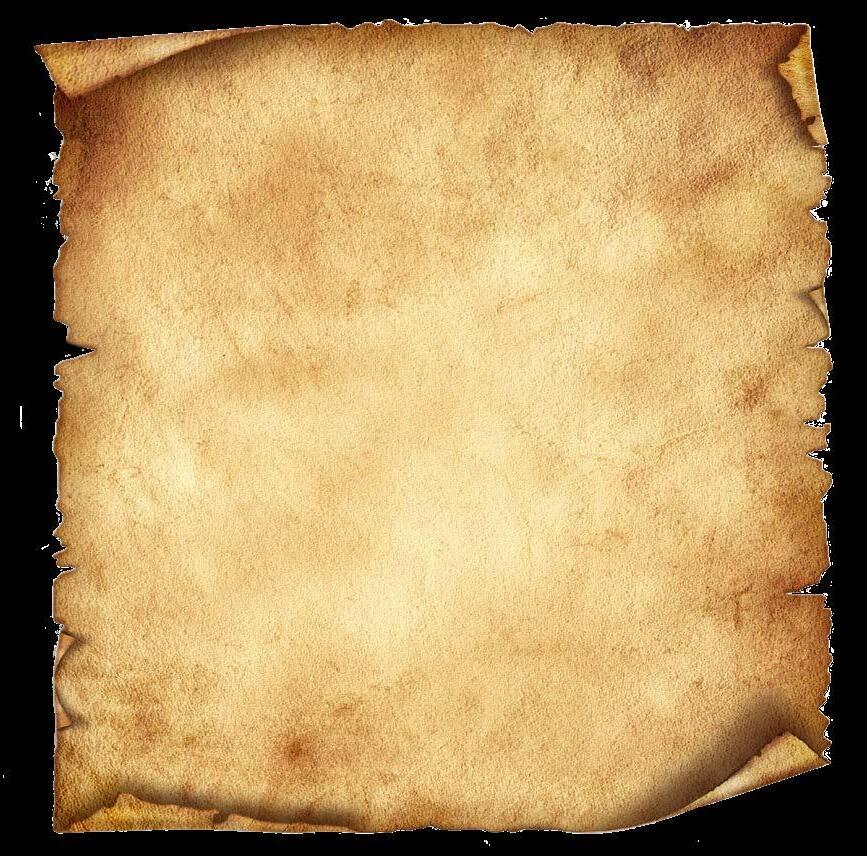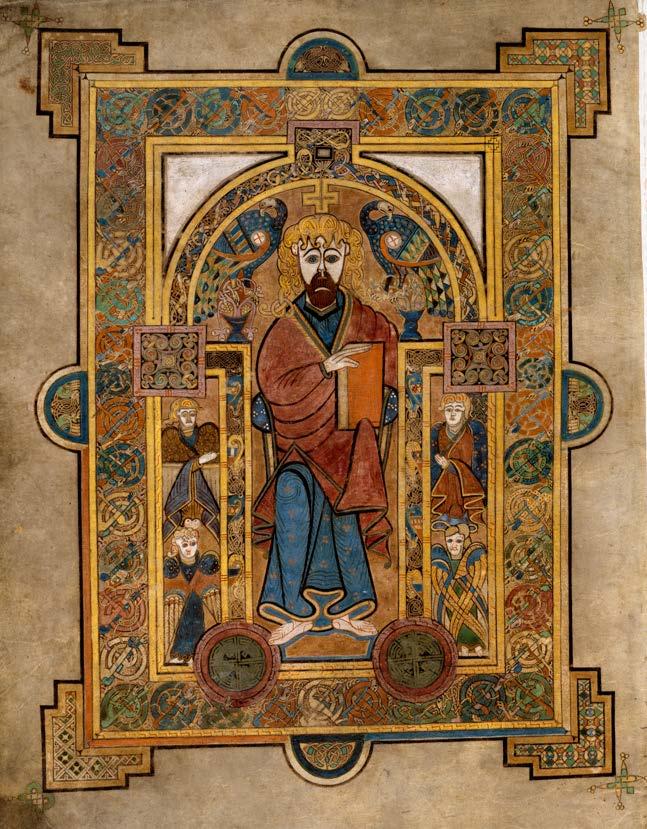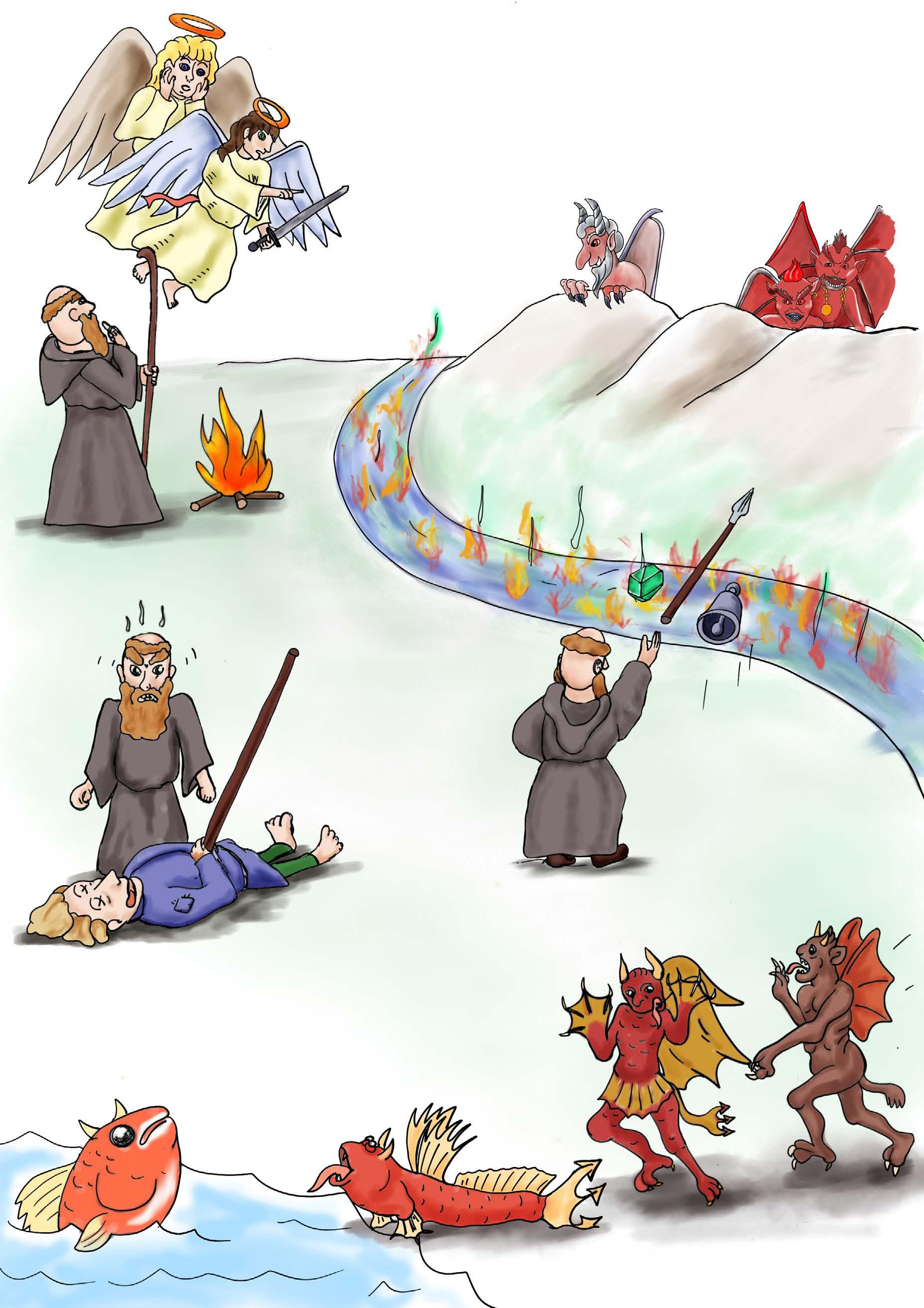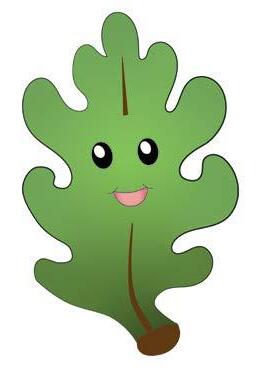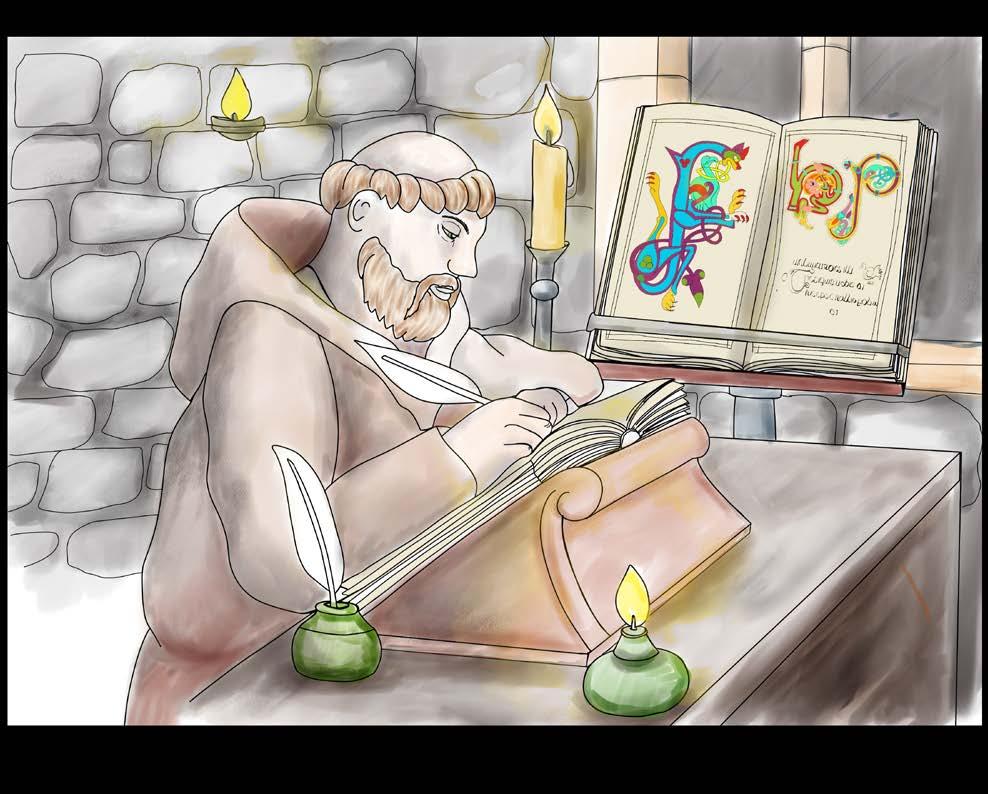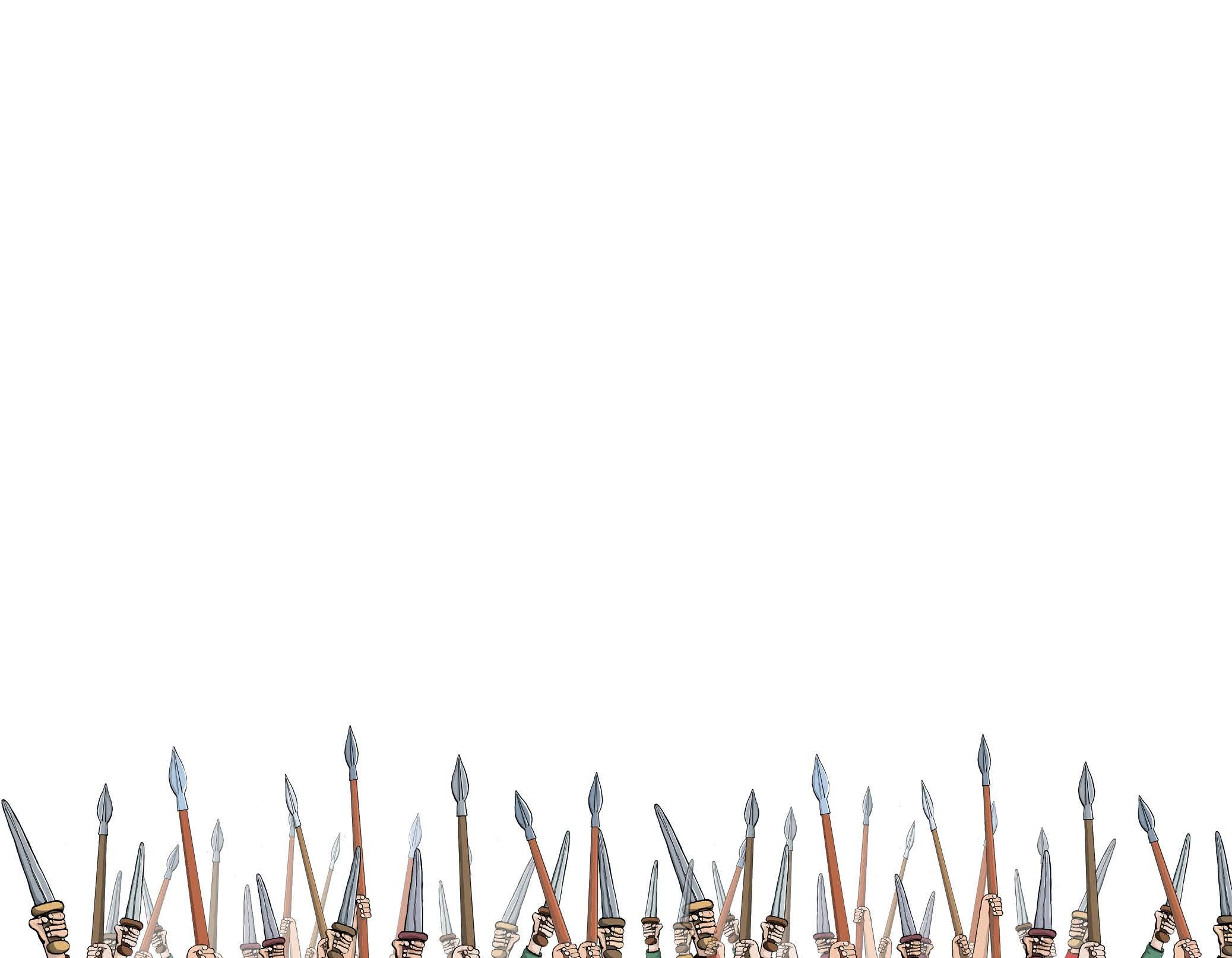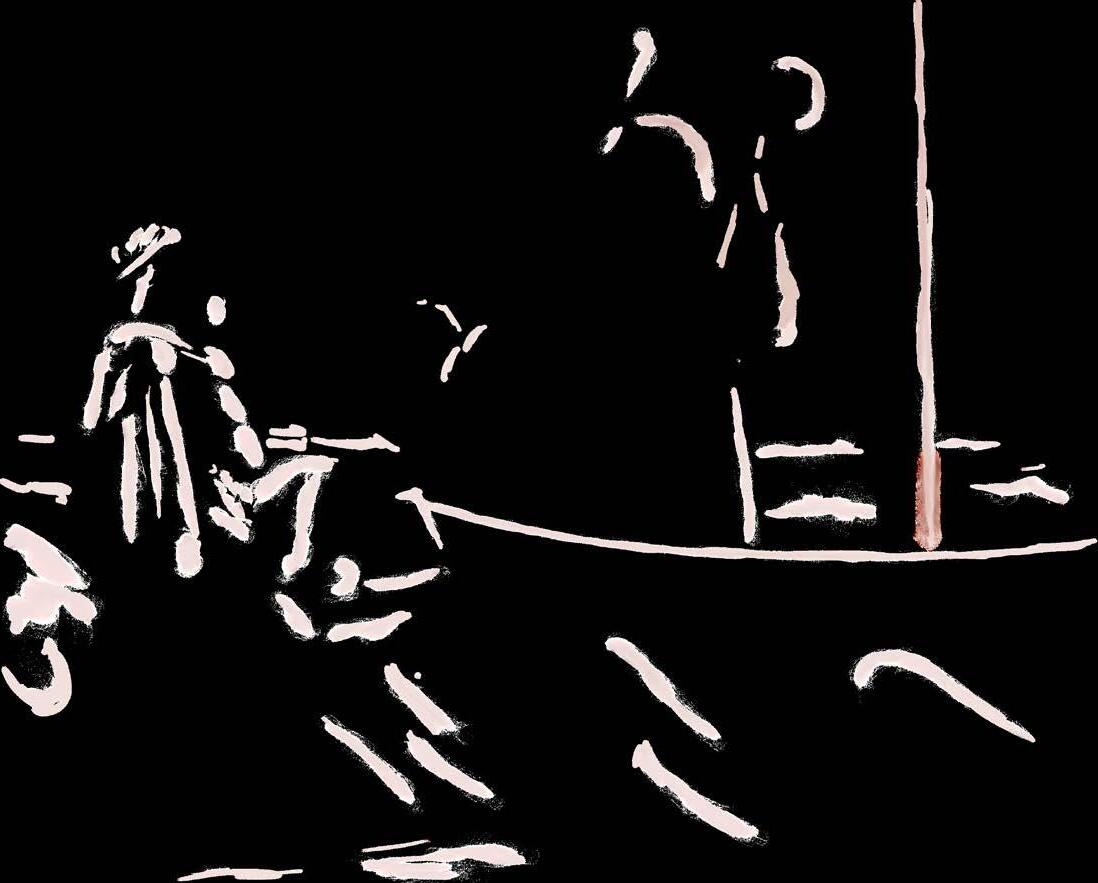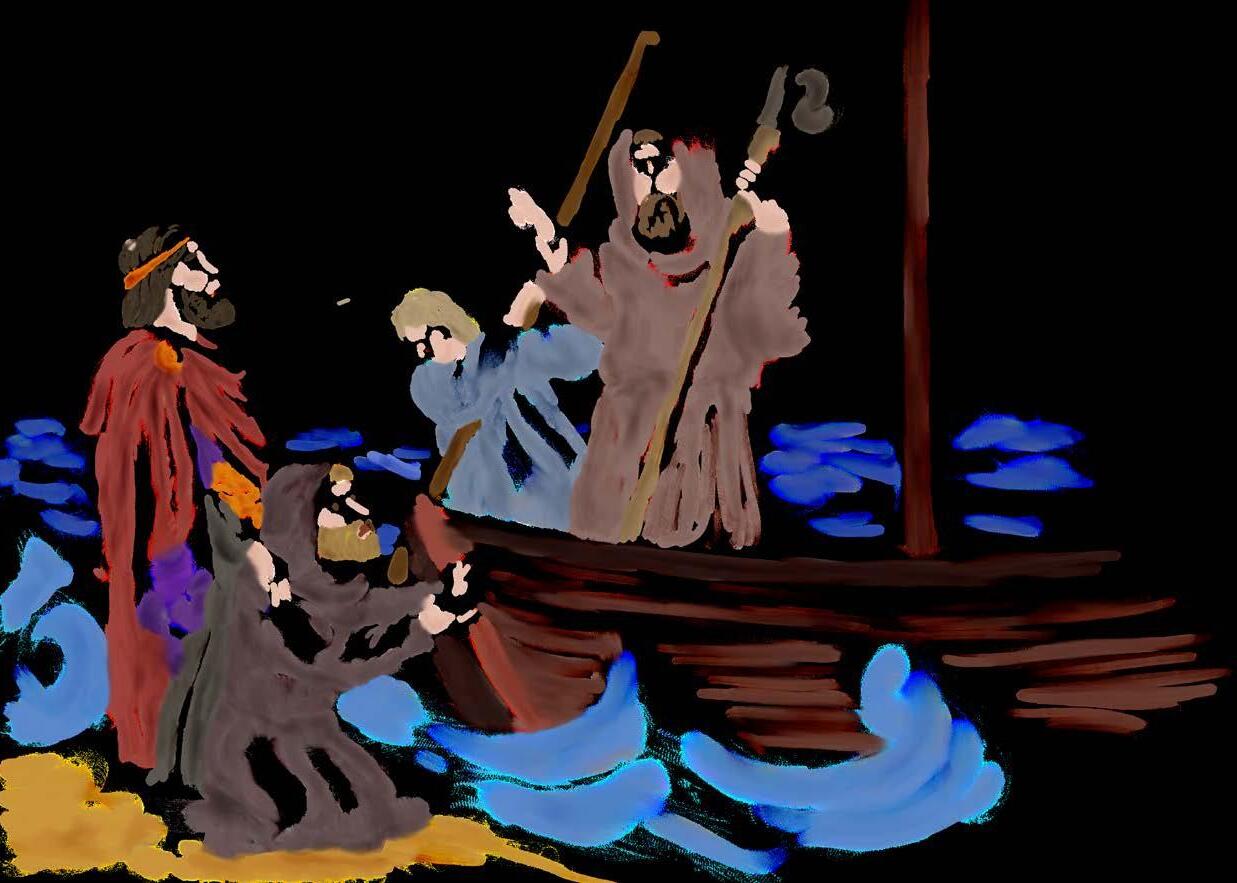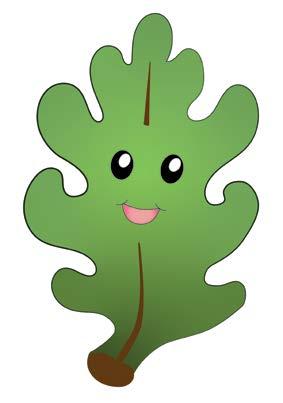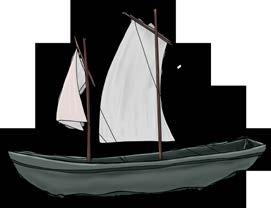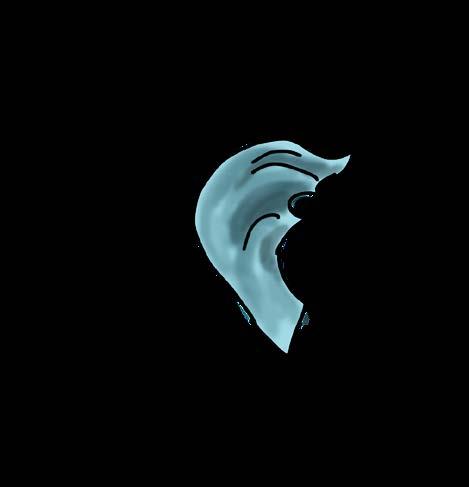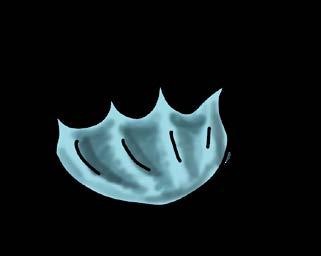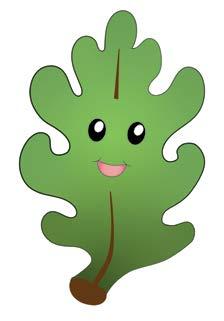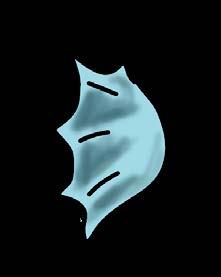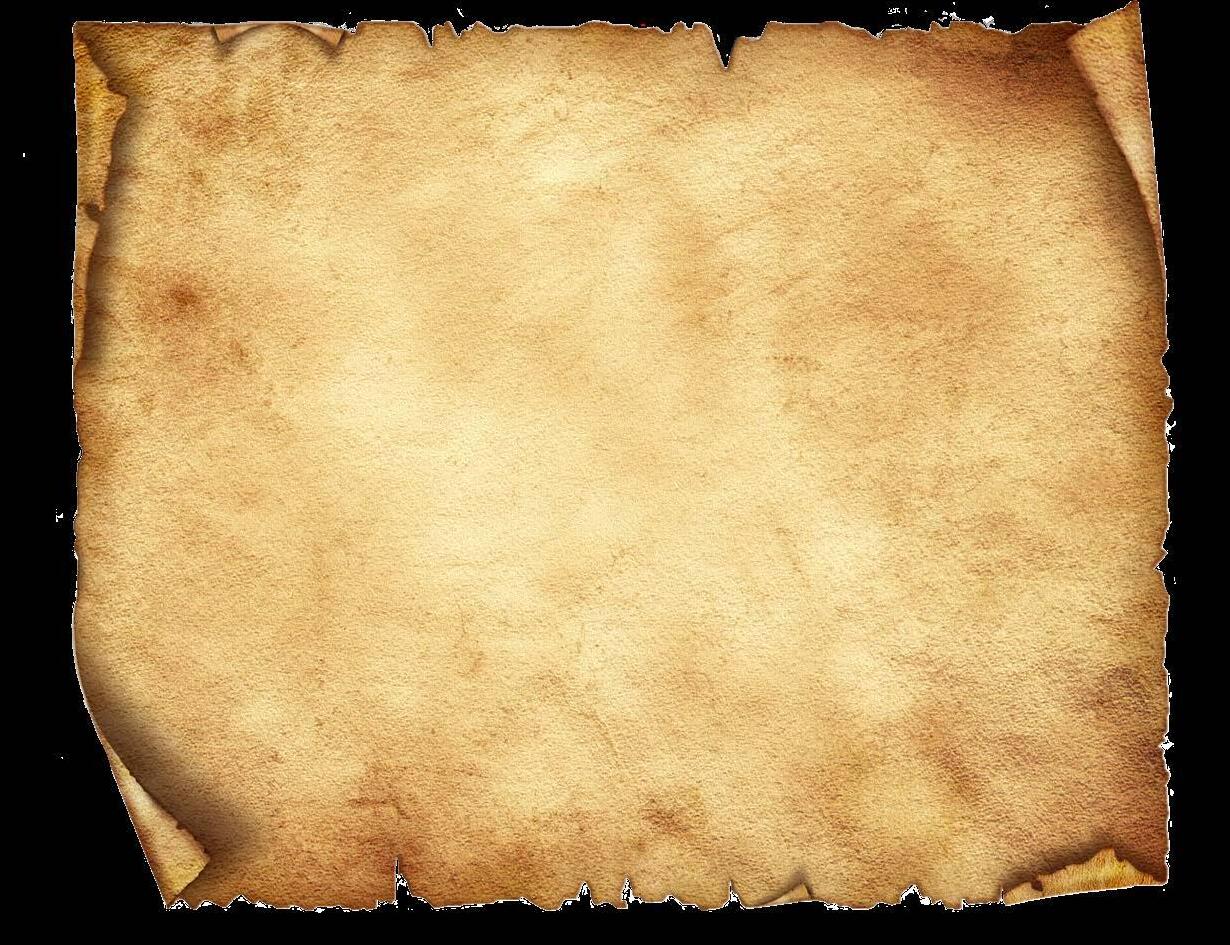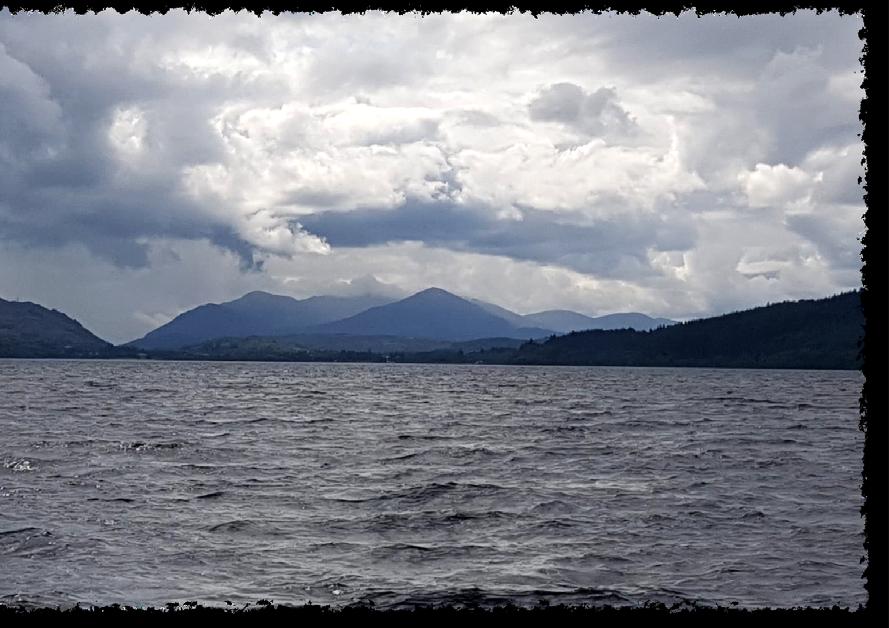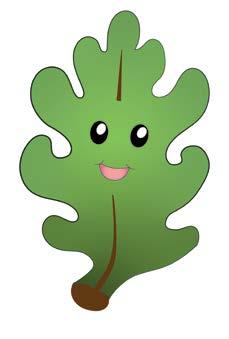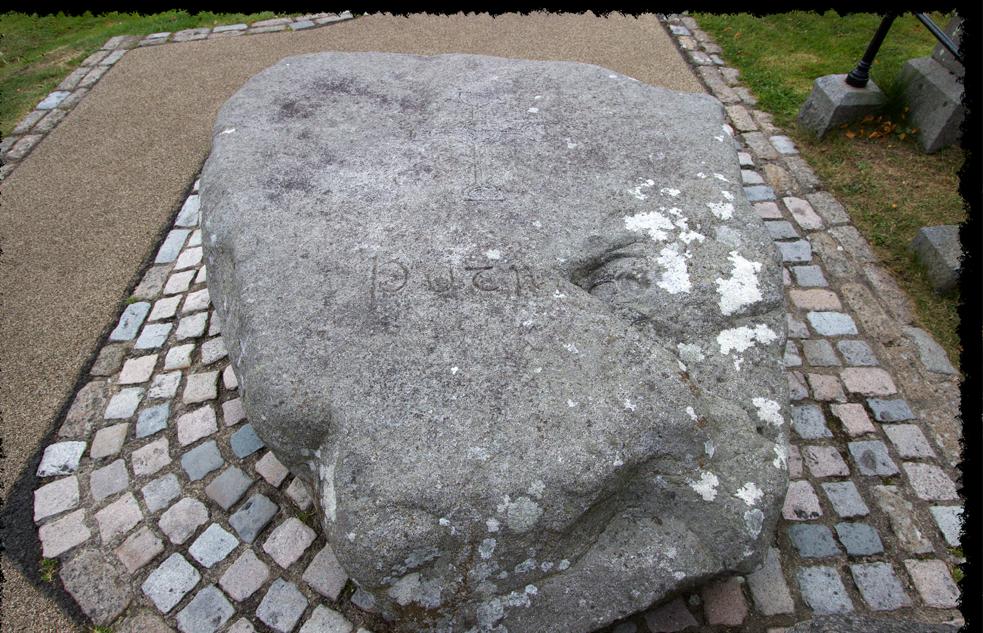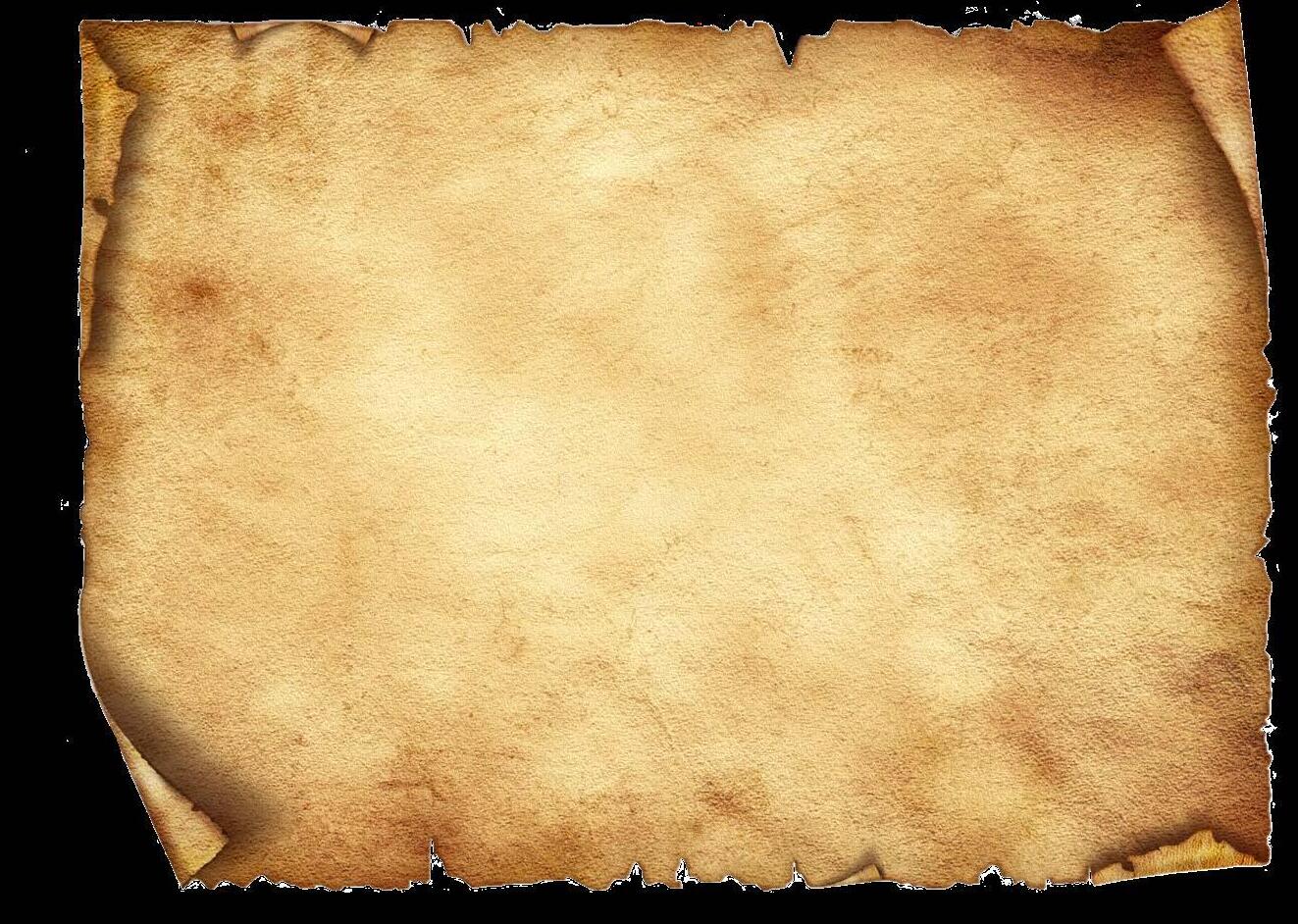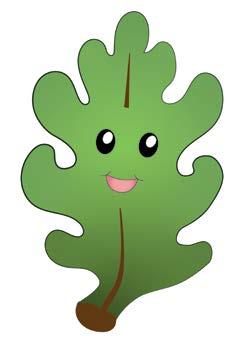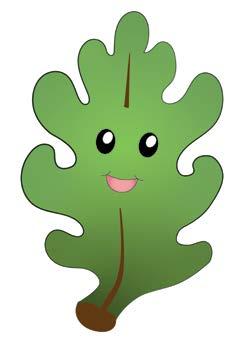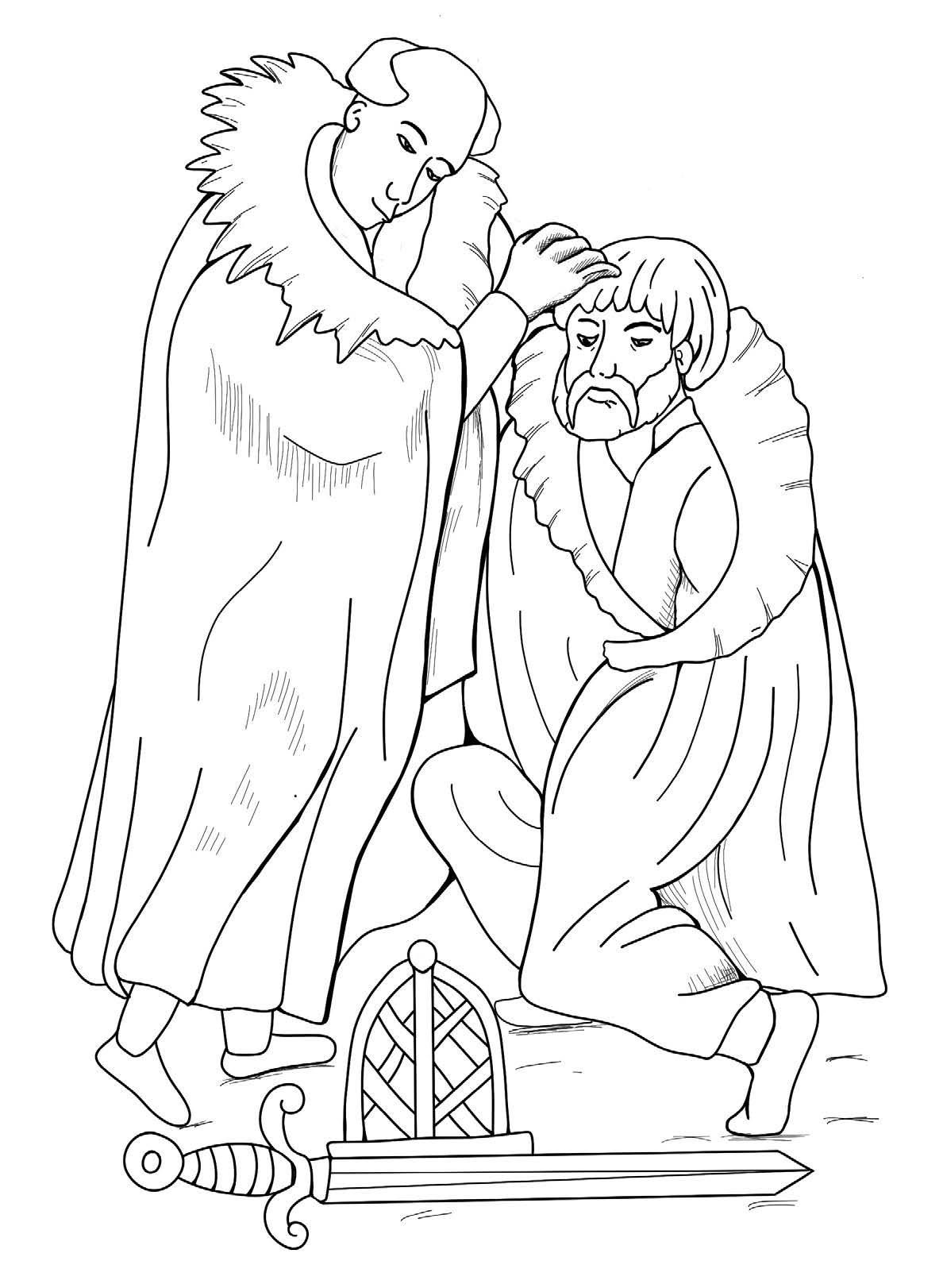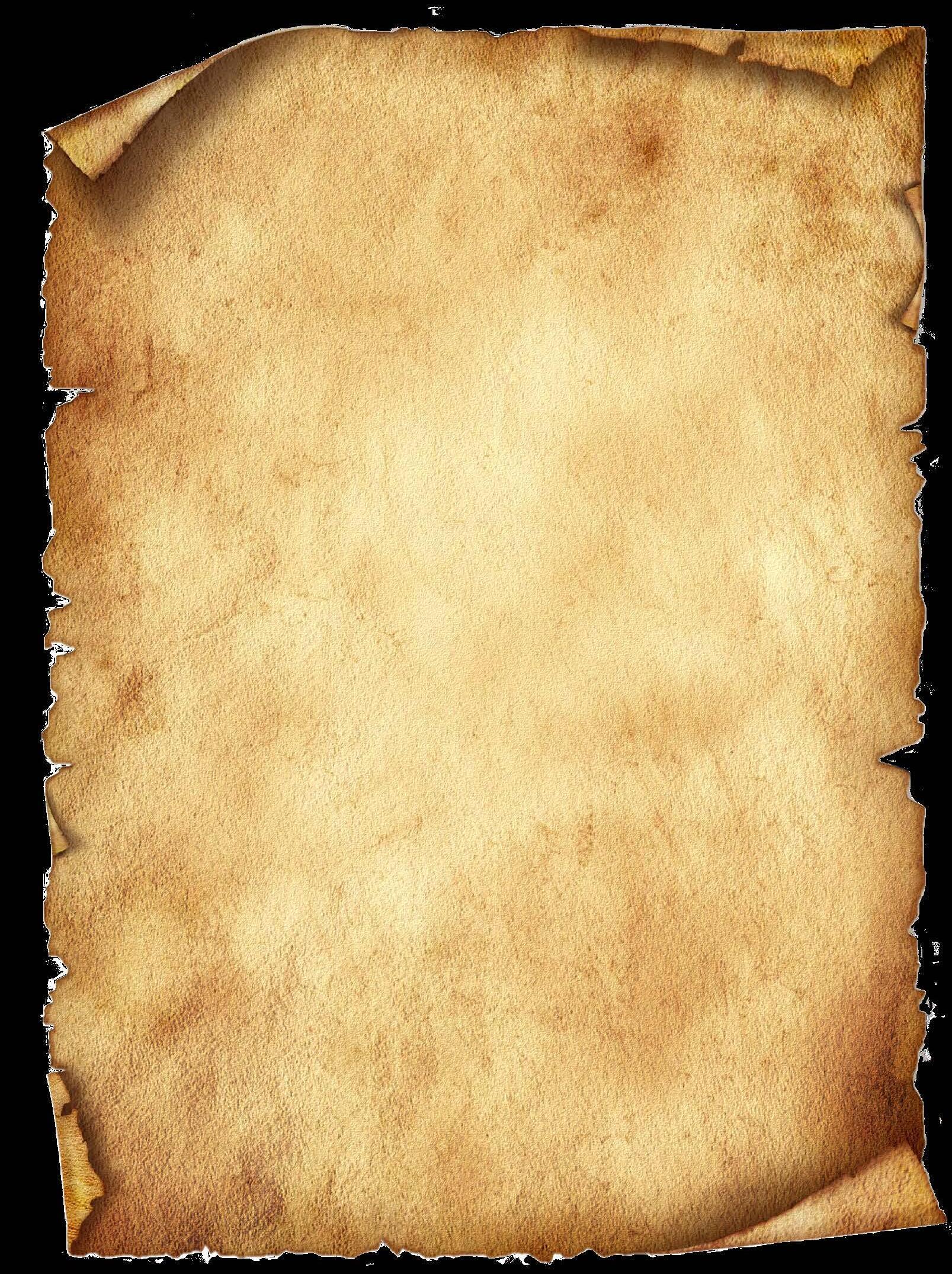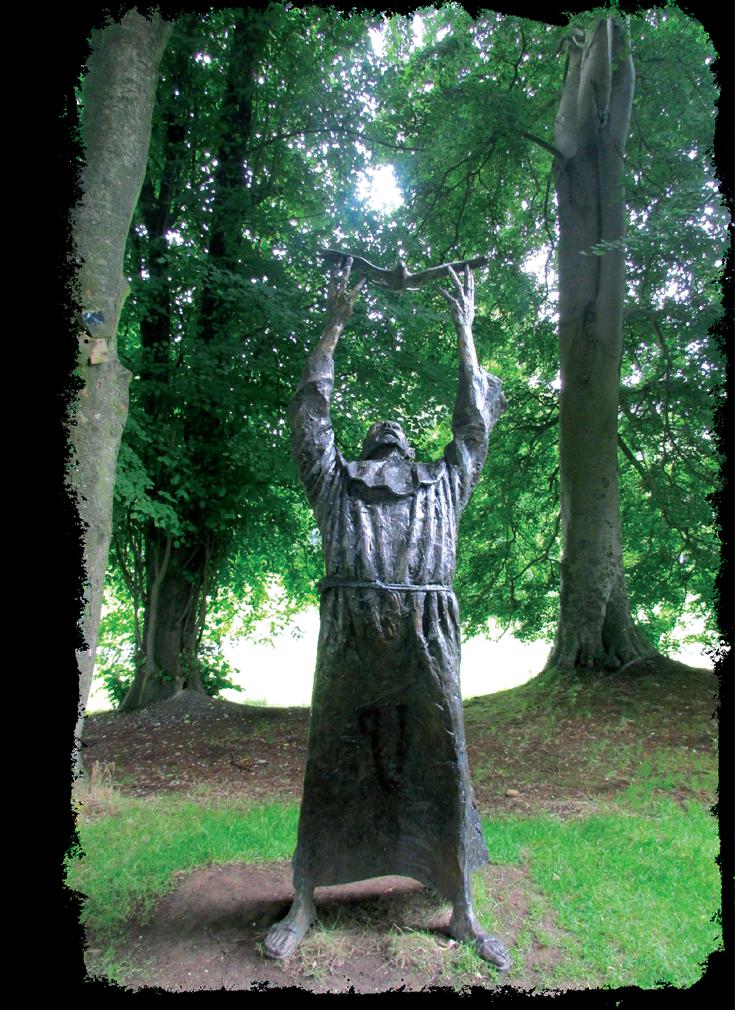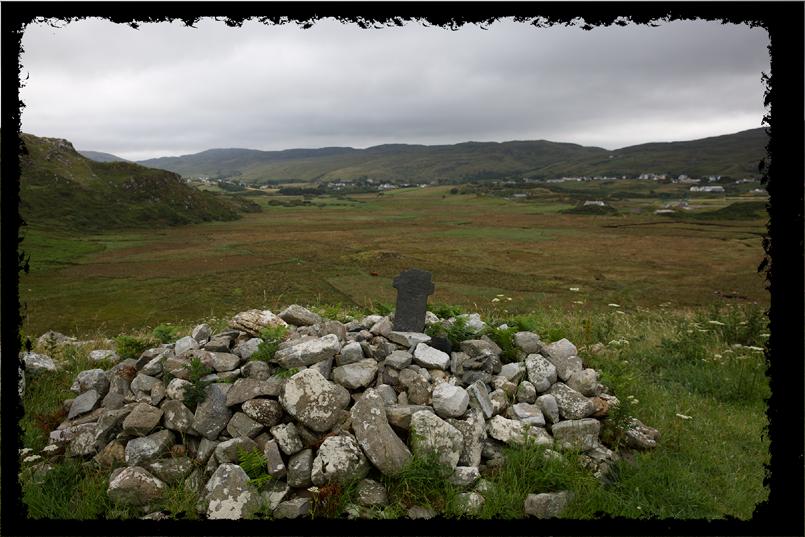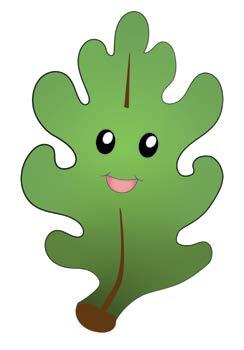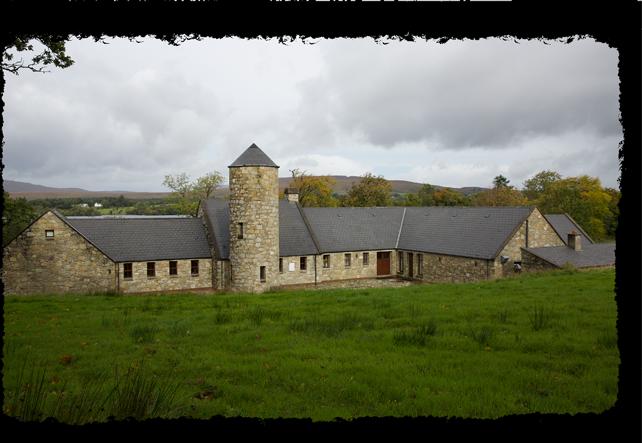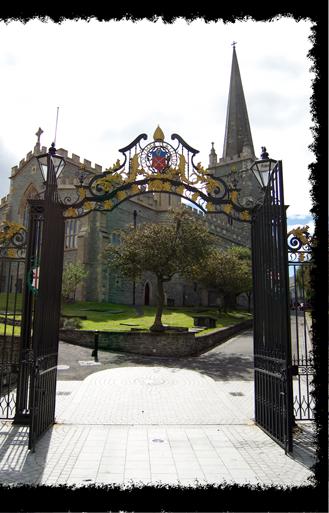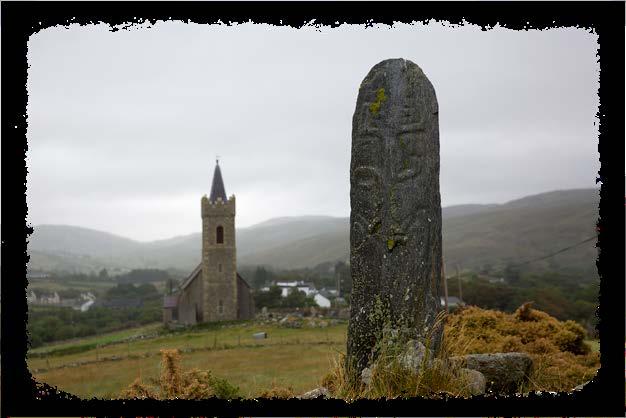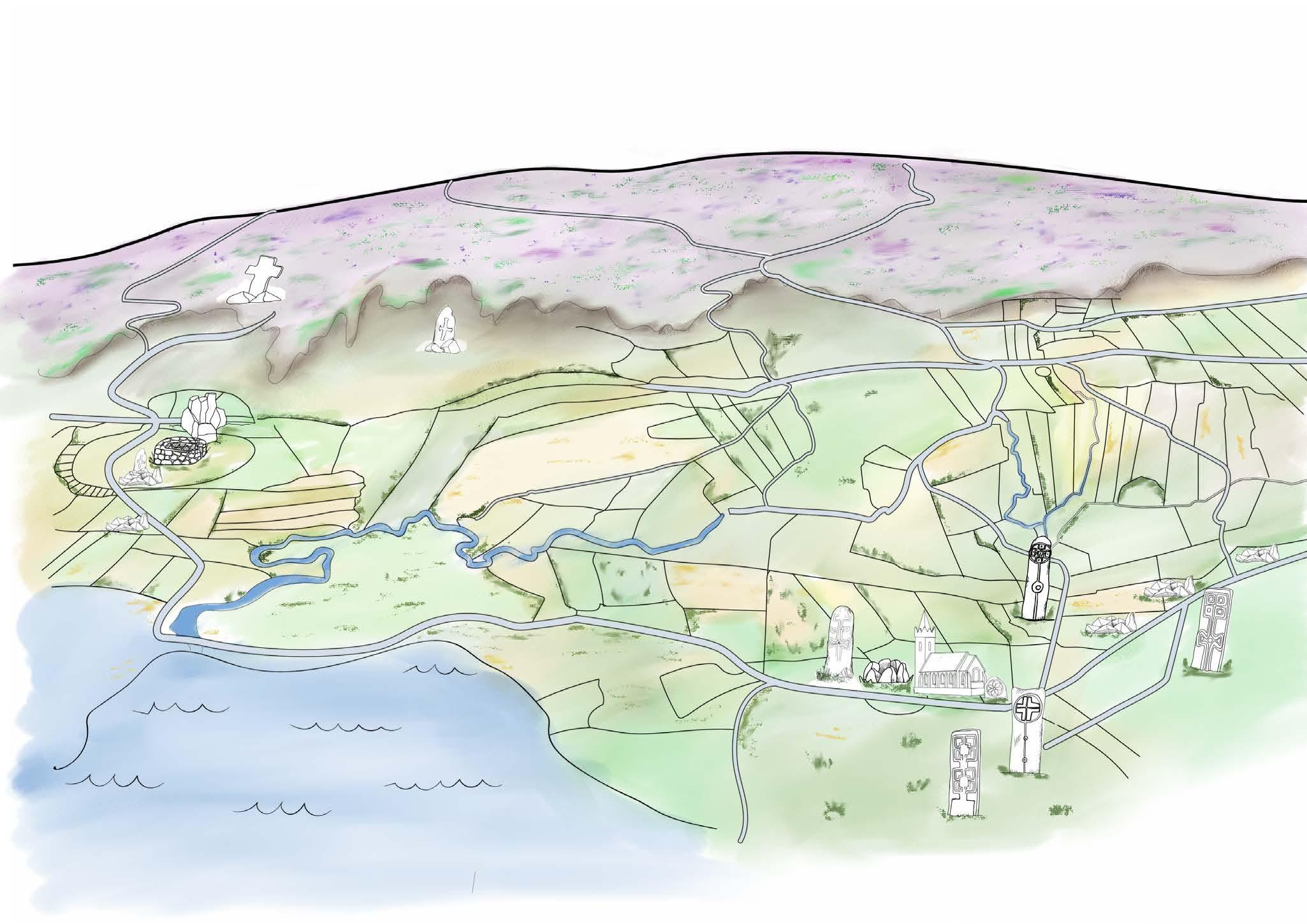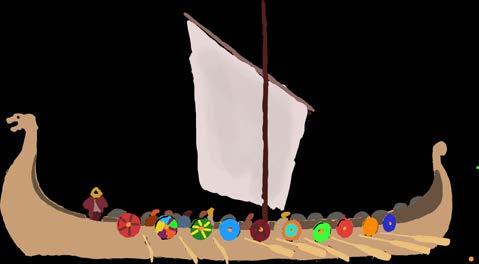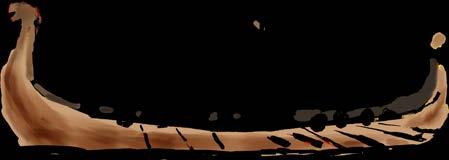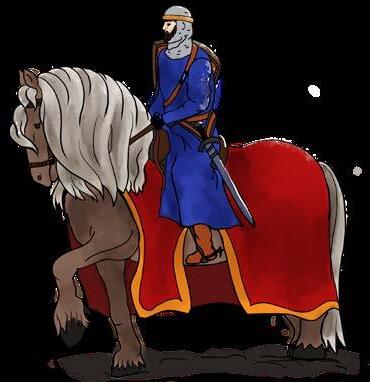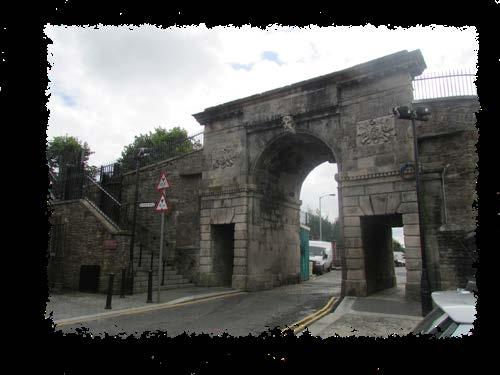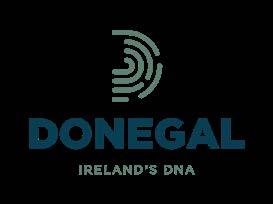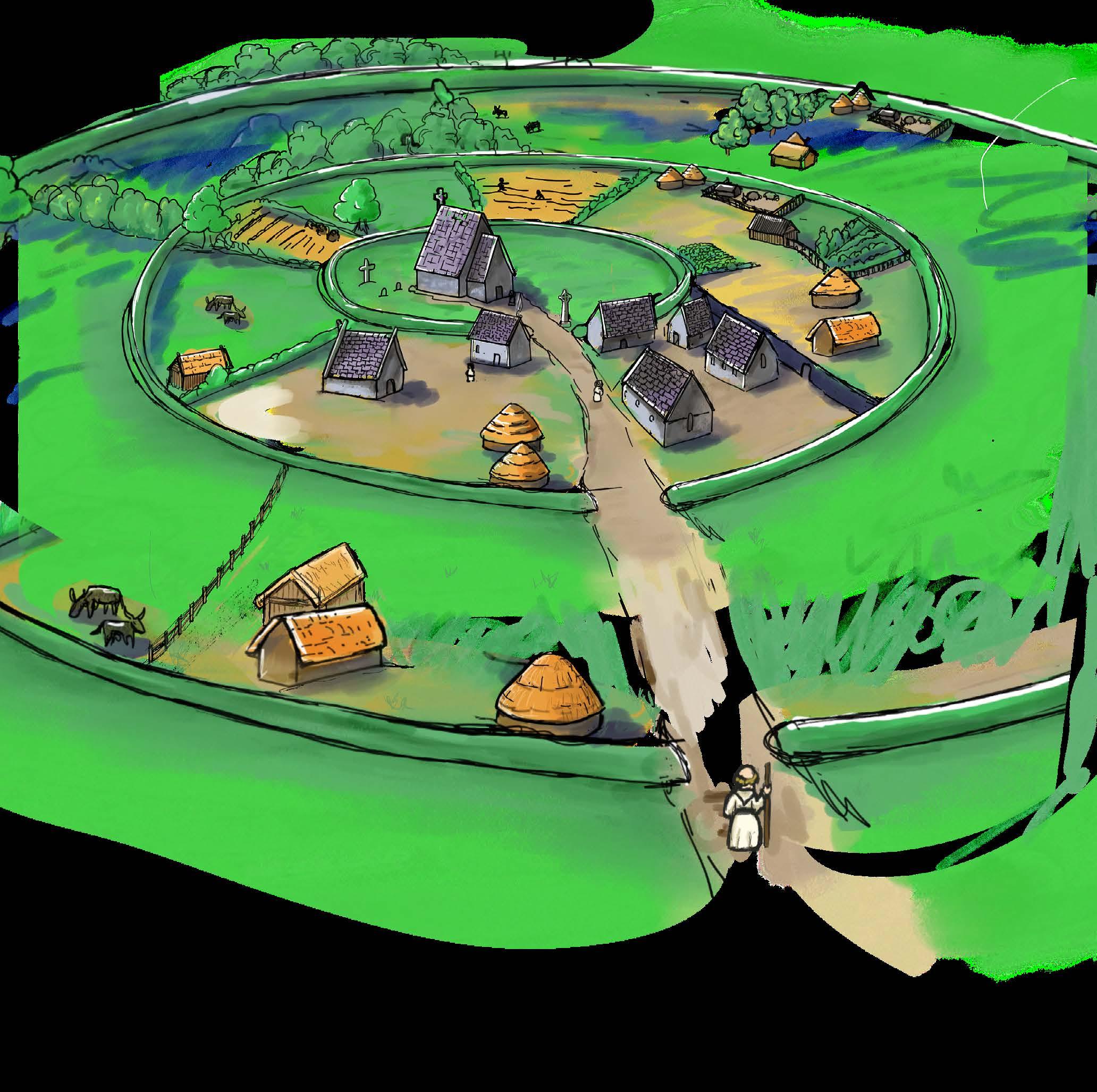Colmcille’s Life and Legacy Education Pack
Created by Abarta Heritage for Donegal County Archives, Donegal County Council
Acknowledgements
This educational resource was produced by Abarta Heritage on behalf of Donegal County Council Archives Service to commemorate the 1,500th anniversary of St. Colmcille’s birth. This book was researched, produced and designed by Abarta Heritage. We would like to thank all those who reviewed and provided feedback on the booklet drafts. We would also like to thank members of the Colmcille 1500 Steering Group and Meath County Council County Library.
We would also like to thank the Board of Trinity College, the Bodleian Collection and the National Folklore Collection for allowing the reproduction of images from their collections. This project was funded by Donegal County Council and Creative Ireland.
ISBN No. 978-1-9993779-0-8
© Published by Donegal County Council, 2021
All rights reserved.
No part of this book may be reproduced or transmitted in any form or by any means, without the written permission of the publisher.
Contents
Page 1: Ireland before St. Colmcille
Page 2: Introduction to St. Colmcille
Page 3: St. Colmcille’s Education
Page 4: St. Colmcille’s First Church
Page 5: St. Colmcille’s Churches across Ireland
Page 6: What is it like to be a monk?
Page 7: What buildings were in a monastery?
Page 8: Scriptorium
Page 9: Book of Kells
Page 10: Gleann Cholm Cille
Page 11: Toraigh
Page 12: A Stolen Book
Page 13: Battle of Cúil Dreimhne
Page 14: Leaving Ireland for Iona
Page 15: Landing on Iona
Page 16: Converting the Picts of Scotland
Page 17: Returning to Ireland
Page 18: Death of St. Colmcille
Page 19: St. Colmcille after Death
Page 20: St. Colmcille’s Legacy
Page 21: Legacy - Place names in Derry and Donegal
Page 22: Legacy - St. Colmcille’s Feast Day and Pilgrimage
Page 23: Legacy - St. Colmcille’s Feast Day and Pilgrimage
Page 24: Ireland after St. Colmcille
Page 25: Additional Resources
Page 1: Ireland before St. Colmcille
8,000 BC Mesolithic hunter gatherers living in Ireland.
4,000 BC Neolithic: Farming arrives.
3,200 BC Newgrange passage tomb is built.
2,500 BC
The skill of making bronze is brought to Ireland.
Ireland is a pagan country with lots of small kingdoms.
0 AD Jesus is born.
Slaves, farmers and warriors live in wooden houses.
432 St. Patrick is brought to Ireland.
492 St. Patrick dies.
There are only a few small churches in Ireland.
520 Colmcille is born.
Lacknacoo cup-marks are created.
Page 2: Introduction to St.
Hi, boys and girls, welcome to the Colmcille Life and Legacy workbook where you will learn all about one of the three great patron saints of Ireland - me!
I go by many names such as St. Columba or St. Colmcille, but my real name is Crimthann which means ‘fox’ or ‘deceitful one’ in Irish. It’s not a very nice name, so God sent his angels to tell my friends to call me Colmcille, which means ‘dove of the church’ in Irish. Some people also call me Columba, which is Latin for dove.
Doves represent peace, love and the Holy Spirit in Christianity.
My parents were Feilimí and Eithne; they were descendants of Irish royalty. I lived a very comfortable life and would have become a prince, except I felt a calling from God. I wanted to spread the word of God and the wonder of Christianity and lead the Pagan people of Ireland into God’s light.
I was born in Gartan, County Donegal on the 7th of December 520 AD or was it the 7th of December 521 AD? I can’t remember, in fairness, it has been over 1,500 years!
It is believed that St Colmcille’s father was descended from Niall Noígíallach (Niall of the Nine Hostages), the man who brought St. Patrick to Ireland.
I was baptised by a priest called Cruithneachán in Templedouglas, County Donegal. He later became my foster-father and taught me all about Christianity. He taught me about the importance of following in God’s footsteps in my life and actions and that I should help guide everyone into God’s light.
Kilmacrennan Abbey - thought to be where Colmcille grew up.
Unfortunately, I couldn’t stay long because a terrible plague came. It caused people to swell up and say very strange things. Nothing could stop this plague; it even killed our great teacher. Page 3: St. Colmcille’s
When I was older, I moved to Movilla in County Down to study Christianity with St. Finnian. Next, I went to a famous Christian school in Clonard, County Meath, with lots of other students. Afterwards, I went with some of my friends to Glasnevin, County Dublin to learn from the great St. Mobhí.
When St. Colmcille studied on the Aran Islands he had a fight with St. Éanna. He cursed the islands so that no firewood could be found there. The people had to use dry cow dung for their fires instead.
After this, I began to travel and spread the word of God!
Page 4: St. Colmcille’s
I built my first church when I was 25 years old.
My cousin King Aodh mac Ainmhireach gave me a beautiful oak grove that he owned in what is now known as County Derry. I loved the old oak trees and refused to cut them down, but I needed to cleanse the area, so I lit a small fire. Unfortunately, it got out of control, but I said a prayer and my beautiful oak trees were saved.
Oak leaves are associated with St. Colmcille.
This humble little church brought many people to the area. They settled down, and over time they built the magnificent city of Derry. I am now known as the patron saint of Derry.
St. Augustines Church, Derry. It is said that this church stands on the site of Colmcille’s first church.
My church in Derry was so successful that I decided to build churches all over Ireland. After my death, my followers built even more churches and named them after me.
Have a look at my map to see where I have been. I travelled across the country to places as far apart as Toraigh and Durrow, which took much longer then than it would today. Remember, we did not have cars back then.
Iona
Toraigh
Argyll
North Sperrins and the Bann derry Gartan Glencolmcille
Kells
Durrow Swords
Outer Hebrides
Tarbat Ness
Page 6: What is it like to be a monk?
I’ve told you all about my many churches and monasteries across Ireland, but I am sure you are wondering what was the life of a monk like?
It was a lot of hard work. We worked all day either farming in the fields, making things in the workshops or writing in the scriptorium and only stopped to eat and pray.
Monks didn’t believe in comfort. St. Colmcille often slept on a bed of stone with another stone for a pillow!
We ate a lot of watery porridge called gruel at the monastery. We were lucky to grow our own vegetables in the garden although we did not have potatoes, they didn’t come to Ireland until the late 1500s.
We went to Mass at least five times a day, got up during the night for prayers, and took vows of silence which could last days! Sometimes I forgot what my voice sounded like.
When I joined the monastery, I was given a fashionable hairstyle called a tonsure. I had to wear a scratchy white tunic with a cloak called a casula to keep me warm and dry.
To be a monk, you must:
• Be a boy (girls could serve as nuns)
• Love God
• Love learning
• Love hard work (this one is really important)
Page 7: What buildings were in a monastery?
In my day, monasteries and churches were small wooden buildings, not like the massive Cathedrals you have now. You can see one of my monasteries below:
The most important building was the Church, where we went to mass at least five times a day! We called this building Ecclesia in Latin.
The area around the church was surrounded by an earthen bank called a Vallum.
There were lots of Workshops and Farm buildings too.
Cells were where we slept and studied, sort of like your bedroom but without all the toys and posters.
The Scriptorium was where we wrote our own books!
We also had a Guest-house for weary travellers who visited us. All these other buildings were surrounded by a second Vallum.
Families liked to live near us and to help us with our chores. They lived inside a third Vallum
Page 8: Scriptorium
My favourite place in the monastery was the scriptorium. This was a peaceful room where I practised beautiful writing known as calligraphy.
A B C D E F
We also created beautiful drawings of animals or difficult knots known as interlace for our books. Many people struggle to create interlace, but there is a trick to doing it, the secret is you must always avoid the dots!
We didn’t have paper, that won’t be brought to Europe for another 600 years, so we wrote on vellum which is calfskin. We made our own paint using stones, flowers and even fungus.
Did you know the skins of 185 calves were used to make the vellum for the Book of Kells?
Almost 200 years after my death, my followers created the beautiful Book of Durrow and the Book of Kells in their scriptoriums.
These books were written in Latin and record the four gospels of Matthew, Mark, Luke and John. They were beautifully decorated and were used on special occasions, like Easter, Christmas and my feast day (9th June).
The Book of Kells takes its name from the monastery of Kells in County Meath, but it is also known as the great gospel of Colmcille.
Page 9: Book of Kells
St. Colmcille’s House, Kells, Co. Meath.
The Book of Kells is one of the greatest medieval treasures in the world. It was made by my monks in around 800 AD on the island of Iona. Sadly Vikings attacked Iona, they stole our treasures and slaughtered my monks! Those that survived left Iona and moved to the safety of Kells in County Meath with this precious book.
Extract from Book of Kells (Courtesy of The Board of Trinity College Dublin).
Anyway, back to my great adventures. Did I tell you that I was visited by angels who warned me that there were horrible demons in County Donegal?
The demons created a mist so thick, no one could see through it, and a poisonous, fiery river sprang up that killed those who crossed it.
My friends and I wanted to defeat them, so we camped beside the river to hatch a plan.
Suddenly, the devil threw a spear at us. It killed my servant An Chearc, which angered me.
I pulled the spear out of An Chearc and threw it back at the devil! Then I blessed the river so my friends and I could cross it.
Suddenly an angel appeared with a green stone. He told me to throw the stone and my holy bell at the demons.
When I did this, the mist disappeared, and the demons fled to the Atlantic Ocean where they hid on an island. But I commanded them to become fish in the sea and do no more harm.
To stop humans from eating the demon fish, I made them red and blind in one eye,
So make sure you never eat a red and blind demon fish for dinner!
Page 11: Toraigh
One day myself and my three friends St. Fionán, St. Dubhthach and St. Begley climbed a big hill called Cnoc na Naomh. We had a good view of pagan Toraigh, which we all wanted to convert to Christianity.
We threw our staffs at the island. I threw mine so hard that it made a crater on the island. Thank God no farmer or fisherman was hurt by my staff! No one else’s staff hit Toraigh, so it was mine to convert.
Unfortunately, Oilill, the ruler of the island, didn’t want to be Christian and refused to give me any land to build a church on. So I asked for a patch of ground, only as big as my small cloak. Oilill agreed, but I tricked him, and miraculously made my cloak grow until it covered the island!
Oilill was so angry with me that he unleashed his poisonous dog. I quickly made the sign of the cross, which caused the murderous hound to leap into the sea to avoid the blessing. Seeing this, Oilill fell to his knees and converted to Christianity. He granted the island to me, and I built another monastery there.
The poisonous dog’s paw marks can still be seen on the island where he leaped into the sea at a place known as Cloch an Chú (Rock of the Hound).
Page 12: A Stolen Book
Remember I told you about my love of writing and being in the scriptorium? Well, this got me into some trouble.
When I was visiting my old friend St. Finnian of Movilla, I saw his beautiful psalter. I wanted it, so I secretly copied the psalter at night.
A psalter is a book which contains psalms from the Old Testament. Psalms are prayers which can be sung to God.
Finnian was so angry that when he found out he demanded that I give him my copy of his book! I refused and brought it to the High King of Ireland, Diarmait Mac Cerbaill, to let him decide. Did I mention Diarmait was also my cousin, so I was very confident about winning the case.
I was shocked when King Diarmait said: ‘to each cow its calf and to each book its copy.’
Meaning that as a calf belongs to its mother, my copy belonged with its owner - Finnian’s book. I was disgusted with the outcome. On top of that, King Diarmait angered me even more, when he killed a prince of Connacht who was under my protection.
THIS MEANT WAR!
Page 13: Battle of Cúil
I went to my homeland of Donegal and Derry and asked my followers and family to wage war against my cousin, the treacherous King Diarmait. They agreed, and we marched to meet King Diarmait in Cúil Dreimhne, County Sligo (near Drumcliffe).
The battle was very gruesome. At the end of the fight, my side had won but at a terrible cost. Over 3,000 people were dead, and I was starting to feel like it was my fault.
The other monks of Ireland were not happy with me. It was our job to be peaceful, to love our neighbours, not to wage war. Many of them wanted me to be excommunicated (which means I couldn’t be part of the church or go to heaven!) This was a fate worse than death, but luckily it didn’t happen.
Excerpt from The Schools’ Folklore Collection. Courtesy of National Folklore Collection - Story recorded by Ailis Ní Maonaig and the interviewee or informant was Mr Griffith. Ailis was a pupil of Cnoc an Dúin (c.) roll number 11377, the teacher was Máire Bhreathnach, For more information, see www.duchas.ie
My old friend St. Molaise told me I must leave Ireland. He said I would not be able to see this land again until I had converted as many people to Christianity as had died in the battle of Cúil Dreimhne. That’s almost 3,000 baptisms I’d have to perform before I could see my beloved Ireland again.
I was very upset at having to leave my family, my friends and my many churches. On my last night, I visited a large rock at Lacknacoo at Churchill, County Donegal. I cried here and asked God to take away my loneliness.
Lacknacoo stone with cupmarks created between 3,000 - 2,000 BC.
The next day I took 12 monks with me, and we sailed a small boat up Lough Foyle. I could see my family, my friends and even some animals running after us waving their goodbyes.
Lacknacoo (Leac na Cumha) means Stone of Homesickness or Sorrow in Irish. Some people believe that if an emigrant lies on the stone at Lacknacoo the night before they leave Ireland, they will not suffer homesickness in their new home.
After being very seasick, we landed on an island. However, when I climbed to the top of its tallest hill, I could still see Ireland, so we left and went to another island called Iona. We landed there on Pentecost Sunday (12th of May) 563 AD and started building a church and cells.
I spent the next few years travelling around the nearby islands and the Kingdom of Dál Riata in west Scotland converting pagan people to Christianity.
Pentecost is the day the holy spirit descended on the disciples of Jesus and gave them the power to speak in different languages.
DERRY
Outer Hebrides
IOna
Inner Hebrides
Dál Riata
Scotland
Page 16: Converting the Picts of Scotland
After converting the people in west Scotland to Christianity, I travelled across the Great Glen to east Scotland where the pagan Picts lived.
On my way, I came across a deep lake called Lough Ness. As we tried to cross the lake, a massive monster burst out of the water and tried to eat one of my men! So, I made the sign of the cross, and in my most fearsome voice, I told the monster to LEAVE, and it did! The local pagan people loved me for saving them from the monster and they converted to Christianity.
Nessie is still hiding from St. Colmcille, that’s why the monster is so hard to see!
Next, I went to visit the King of the Picts, but he was not happy to see me and used his pagan druids to close the doors to his house and seal them with magic. I made the sign of the cross before the doors, and they burst open! Everyone inside was impressed and they decided to become Christians too.
Loch Ness, Scotland.
Page 17: Returning to Ireland
I was ordered by Aodán mac Gabhráin the King of Dál Riata to return to Ireland and attend a meeting at Droim Ceat, County Derry.
I was so excited to finally come home, but I was still not allowed to see Ireland. So I blindfolded myself for the whole trip.
At the meeting of Droim Ceat, I settled a dispute between the High King Aodh mac Ainmhireach (my cousin who gave me land for my church in Derry) and King Aodán of D Riata. I healed people, stopped High King Aodh expelling all the poets from Ireland and I did it all blindfolded!
The poets were in trouble with the king because they were charging high prices and saying rude things about him and the other wealthy chiefs.
Page 18: Death of St.
The years passed by and I continued to convert people to Christianity and build churches. One day, a white horse came to me and cried on my lap. The horse knew I was old and very very tired.
On the 9th of June 597 AD, I collapsed near my altar in Iona. My friends ran to me, and I said:
Raise my hand
That I may bless my monks. Higher still that I may bless the Land of Erin and all I love there, My oak grove and my children.
Possible burial place of St. Colmcille at Downpatrick, Co. Down.
After his death Colmcille became the Sanctus (Latin word for saint) of book binders, poets, Derry, and Ireland!
Sadly, I died at the age of 76, though I’m not sure where I was buried? I think it was the island of Iona, but others say I was brought to Downpatrick in County Down and was buried beside my fellow patron saints of Ireland, Bridget and Patrick.
After my death, my monks travelled across Ireland, Scotland and North England spreading Christianity. They told people about my great life and adventures.
Many people have since written about me. St. Adhamhnán, the Abbot of Iona (another one of my relatives), wrote a book called Vita Columbae which is Latin for Colmcille’s Life. His book was all about the prophecies and miracles I performed while I was alive.
Nearly one thousand years after my death, Manus O’Donnell, the Chief of Tír Conaill, had ‘Beatha Cholm Cille’ – The Life of Colmcille written about me in 1532. This is the most detailed book about my life.
Parts of Derry and Donegal were once in the kingdom of Tír Conaill.
Manus and his family loved me. They held special ceremonies in Kilmacrennan, where I used to live and carried my copy of the stolen psalter into battle. The book became known as the Cathach or ‘the Battler’.’
Abbots are in charge of monasteries, kind of like a school principal.
A King is blessed by a Columban monk at Doon Rock, Kilmacrennan.
20: St. Colmcille’s
To this day Colmcille has a great legacy in both Britain and Ireland, below are some of the things Colmcille is known for:
I am one of the three patron saints of Ireland, along with St. Patrick and St. Bridget.
I created a great link between Scotland and Ireland.
I began to write Irish history at Iona. I founded many churches in Ireland and Scotland.
My followers created the Book of Durrow.
I am the patron saint of Derry. My feast day is celebrated throughout the world on the 9th of June.
I wrote many hymns.
I founded Iona, an important early Christian site where 48 Scottish kings, 4 Irish kings and 8 Norwegian kings are buried.
My followers created one of the greatest treasures of the middle ages, the Book of Kells.
Page 21: Legacy- Place names in Derry and Donegal
There are many churches, schools, community centres, sports pitches and streets named after St. Colmcille in counties Donegal and Derry. For example:
Can you think of any more places named after me in your area?
Holy well at Turas Cholm Cille, in Co. Donegal
St. Columb’s Park in Derry.
Page 22: Legacy- St. Colmcille’s Feast Day and
9th
JUNE
Every year my feast day is celebrated on the 9th of June (the day I died).
On this day people say prayers to me, they go to churches named St. Colmcille, they go to holy wells blessed by me, and they go on a Turas or pilgrimage.
There are many pilgrimage routes dedicated to me in Derry and Donegal such as the Slí Cholmcille and Turas Cholm Cille. During a pilgrimage, people walk to places called penitential stations, that are connected to me. At the stations, they perform rituals. You might see someone walking around the station clockwise, or you might hear someone saying prayers at the station during a pilgrimage.
A pilgrimage is when a person goes on a long journey to a sacred place.
Some people wear oak leaves on St. Colmcille’s feast day, while others walk the pilgrimage barefoot!
Doon well near Termon, Co. Donegal
Turas Cholm Cille Station 6, Co. Donegal
Page 23: Legacy- St. Colmcille’s
Here are some interesting places you might see if you go on the Slí Cholmcille or Turas Gleann Cholm Cille pilgrimage between the 9th of June and the 15th of August.
Here is a map of Turas Cholm Cille, Gleann Cholm Cille. You can follow the pilgrimage by visiting the different stations (numbered on the map). There are 15 in total. Remember to wear an oak leaf when you walk the pilgrimage with your family!
Gartan Heritage Centre, Co. Donegal
Gleann Cholm Cille station 2, Co. Donegal
St. Columb’s Cathedral, Co. Derry
Page 24: Ireland after St. Colmcille
520/521 AD 520/521 AD St. Colmcille is born in County Donegal.
545 AD 545 AD St. Colmcille founds his first church in Derry.
St. Colmcille copies St. Finnian’s book. Battle of Cúil Dreimhne .
563 AD 563 AD St. Colmcille leaves for Iona.
597 AD 597 AD St. Colmcille dies on Iona.
795 AD 795 AD Vikings attack Iona. Book of Kells is written.
800 AD 800 AD
1169 AD 1169 AD Normans invade Ireland.
1689 AD 1689 AD Siege of Derry.
1798 AD 1798 AD The 1798 Rebellion.
1845 AD 1845 AD The Great Irish Famine begins.
1914 AD 1914 AD World War I begins.
1916 AD 1916 AD Easter Rising.
1921 AD 1921 AD
2020/ 2021 AD 2020/ 2021 AD War of Independence ends.
St. Colmcille’s 1500th Birthday.
1607 AD 1607 AD Flight of the Earls from Donegal.
Name Content
Link or Location Name
Colmcille Life and Legacy
Great interactive website for pupils where they can watch videos, read ebooks and learn more about St. Colmcille, monasteries and the Book of Kells.
The Book of Kells Primary School Teachers’ Guide
Illuminating Colmcille, A pilgrimage through colour
St. Columba Heritage Centre
Nerve Centre
Digital Book of Kells
Ask About Ireland
https://ccea.org.uk/ colmcille/index.php
Lots of fun facts for pupils with great images and activities about St. Colmcille and the Book of Kells. www.tcd.ie/visitors/assets/ bok/education/book-ofkells-primary-teachersguide_updated-07-09-20. pdf
A fantastic colouring book about St. Colmcille’s life and legacy.
Youtube video about the life of St. Colmcille
Collection of videos about St. Colmcille and the Book of Kells made by pupils in Derry-Londonderry
A useful resource for pupils to learn more about St. Colmcille and other educational topics.
https://www.donegalcoco. ie/culture/heritage/ publications/
https://www.youtube.com/ watch?v=sl8q8fHriMw
https://www.youtube. com/playlist?list=PLTvQgtgMm8NlXdY8evnikLrzRS6HLMMxq
http://www. askaboutireland.ie/ learning-zone/primarystudents/looking-atplaces/donegal/people-inhistory/saint-colmcille/
Name Content
Slí Cholmcille
Audit of Columban Heritage
Schools Folklore Collection
A great resource to discover more about St. Colmcille’s travels and pilgrimage sites in Derry, Donegal and Scotland.
Interesting information about the places St. Colmcille is connected to in Derry and Donegal.
A fantastic collection of handwritten stories and folklore by primary school pupils in the 1930s.
Link
or Location Name
Donegal County Archives
St Colmcille’s Donegal - A Journey Through his Homeland
Colmcille Heritage Centre
https://www.donegalcoco. ie//media/donegalcountyc/ heritage/pdfs/AUDIT%20 OF%20COLUMBAN%20 HERITAGE%20mid%20 res.pdf
https://www.duchas.ie/en/ cbes
A useful resource for information about Donegal’s history. http://www.donegalcoco. ie/culture/archives/
The audioguide takes you through St. Colmcille’s homeland.
https://www. abartaheritage.ie/ archaeology-irish-historyaudio-books/
A heritage centre which tells the life story of St. Colmcille through interpretative displays, audiovisual film and replicas. Gartan, Church Hill, Letterkenny, Co. Donegal.
